I love making pies, but pie crust can be a bit fiddly to make and shape without the right ingredients and instructions. This recipe, though, works really well and the dough is very easy to roll out and shape! Use my double crust recipe if you are making a pie with both a bottom and top crust. Use this one for any single crust pie, whether or not you will be blind baking it. It makes ten percent more dough than half of my double crust recipe does. This makes it possible to roll the dough out to a large enough circle to be able to fold the edge over for a double thick edge. Here are the ingredients you will need:
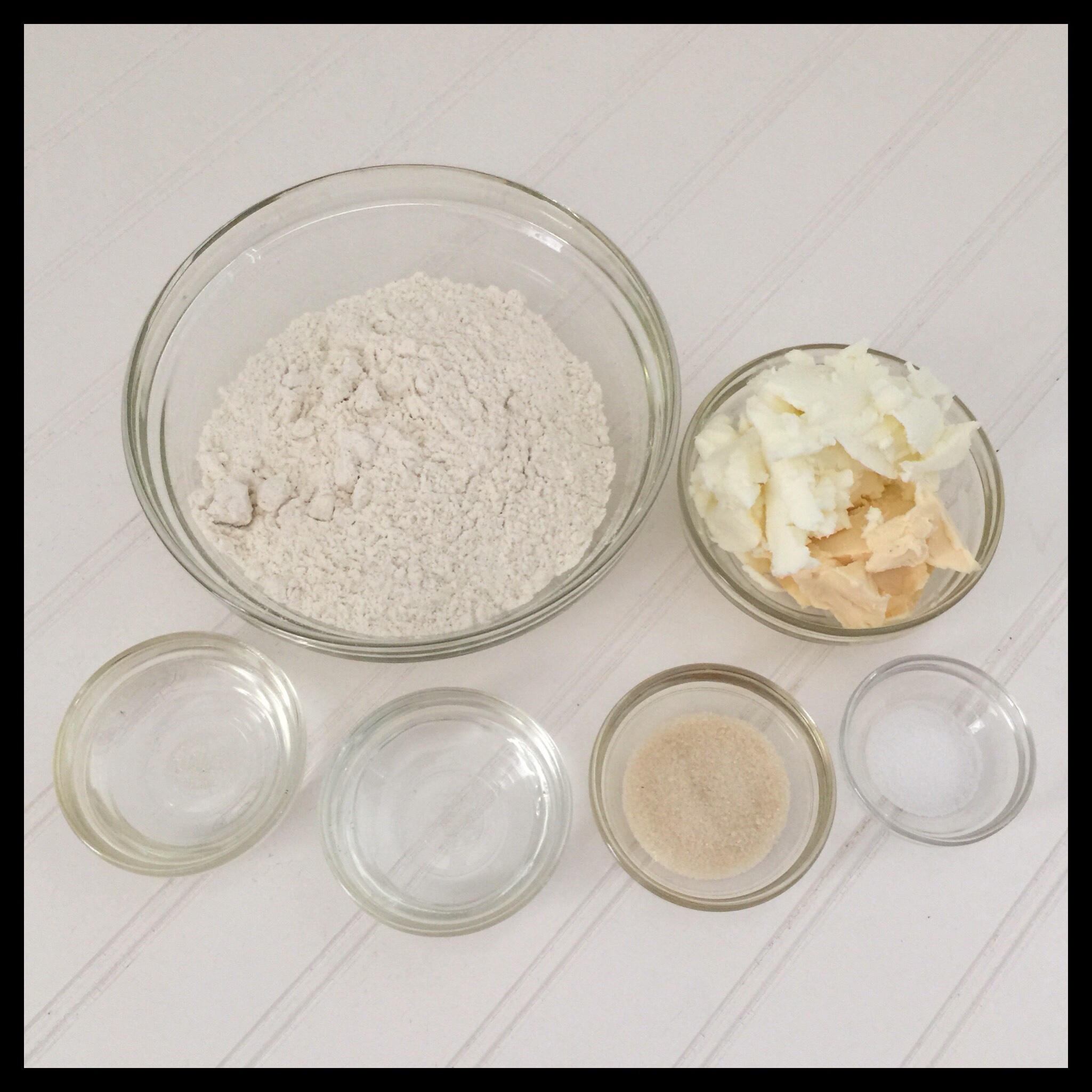
You will also need waxed paper, a sturdy fork, a rolling pin, a pie pan, and a work surface on which you don’t mind getting grease spots. A pastry cutter is very helpful as well. You can use the fork to cut in the fat, but it takes a lot longer than using a pastry cutter.
I use Freely Vegan flour to make pie crust, but my two-ingredient gluten free flour blend also works very well. I have not tested this recipe with all of my other DIY GF flour blends. Most should work, but you may not get the results shown here. I have tested this recipe with Bob’s Red Mill 1:1 gluten free flour blend and got pretty good results. The texture of the Bob’s was not as fabulous as mine, but was still good.
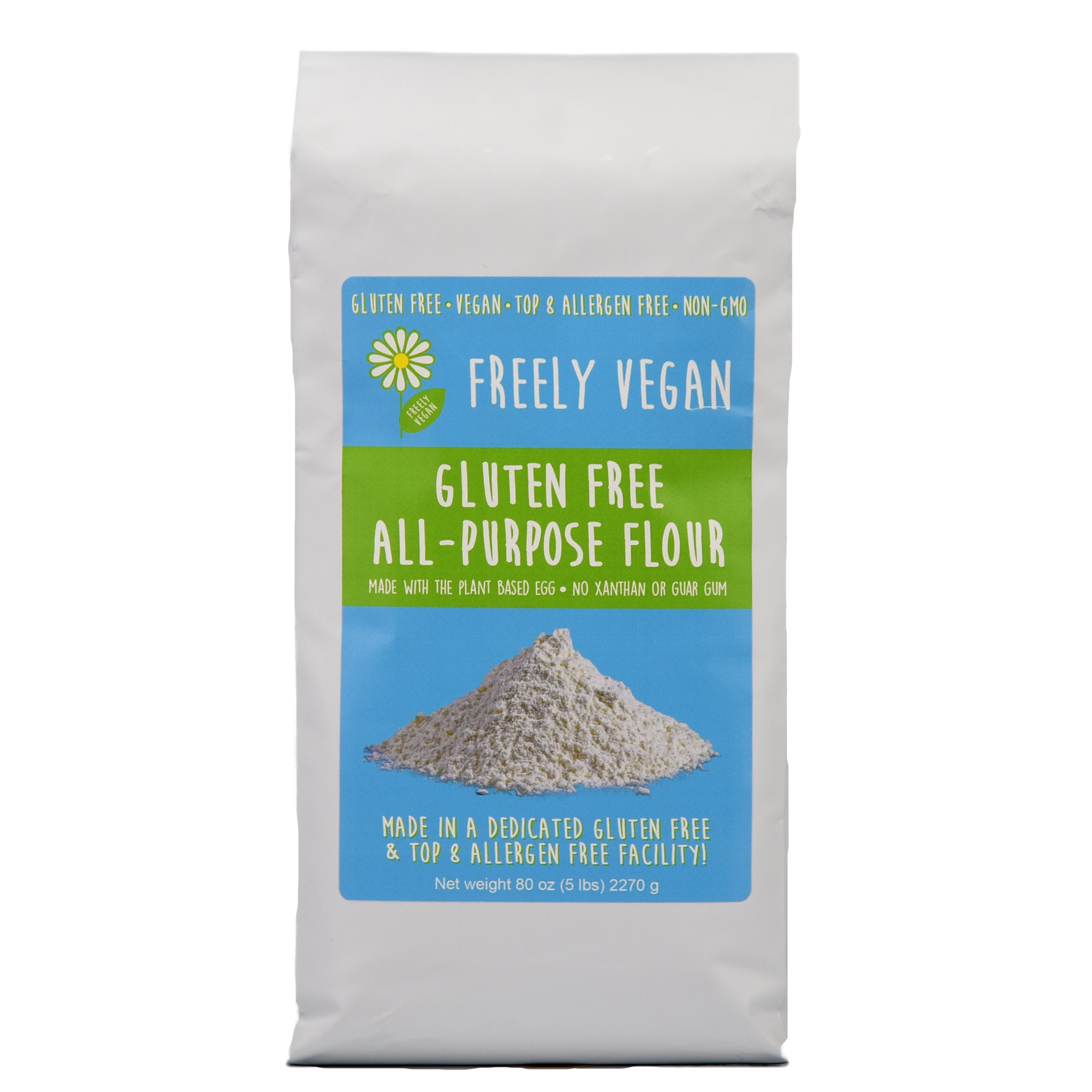
I highly recommend weighing the flour because different flour blends have different densities, and measuring flour is inaccurate anyway. If you do measure, spoon the flour into your measuring cup, then level it with a straight edge.
Add the flour, sugar, and salt to a mixing bowl. Whisk together, then add the shortening and Earth Balance. I use Earth Balance Original Spread and Spectrum Organic Shortening, and I have not tested the recipe with any other brands.
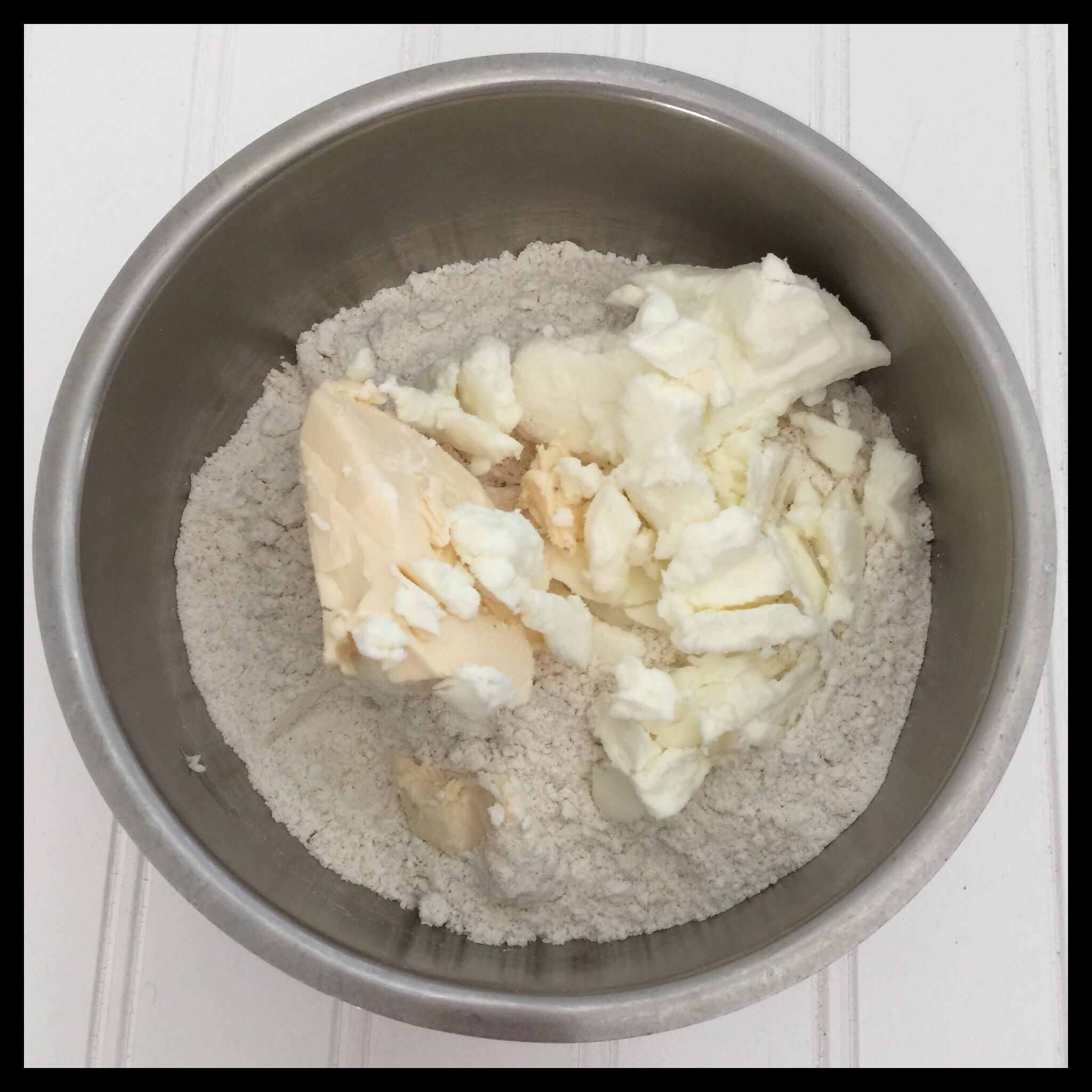
Use two knives to cut up the fats into 3/4″ size pieces that are coated with the flour mixture like this:
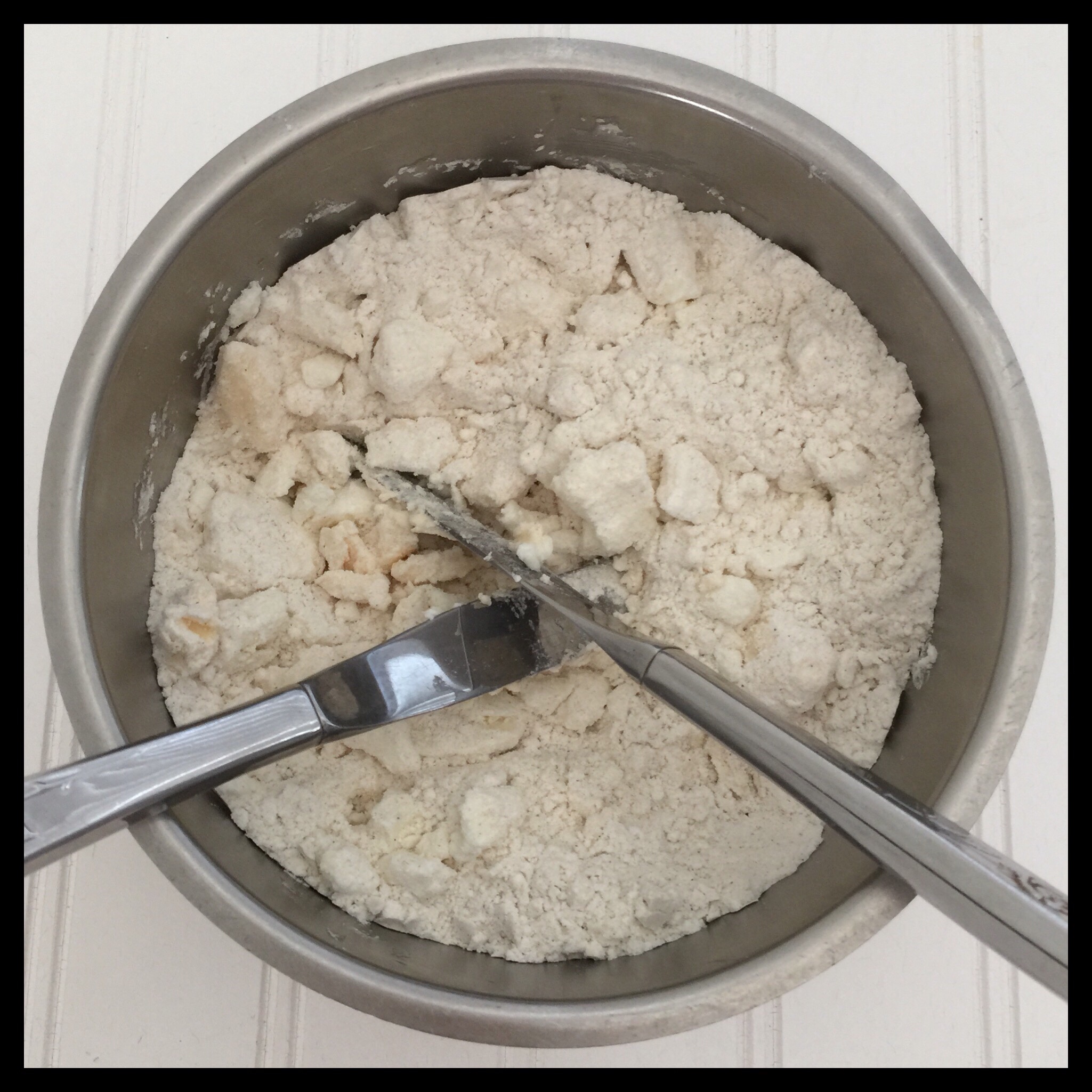
Combine the water and vodka, then place both the liquid mixture and the flour mixture in the freezer for 20 minutes. Using half vodka makes it possible to add sufficient liquid for a pliable dough without ending up with a tough crust. I never use all water and my crusts are always flaky and perfect. (Note: do not leave the mixtures in the freezer longer than 20 minutes, or the fats will be too hard to cut in properly and your vodka water may freeze.)
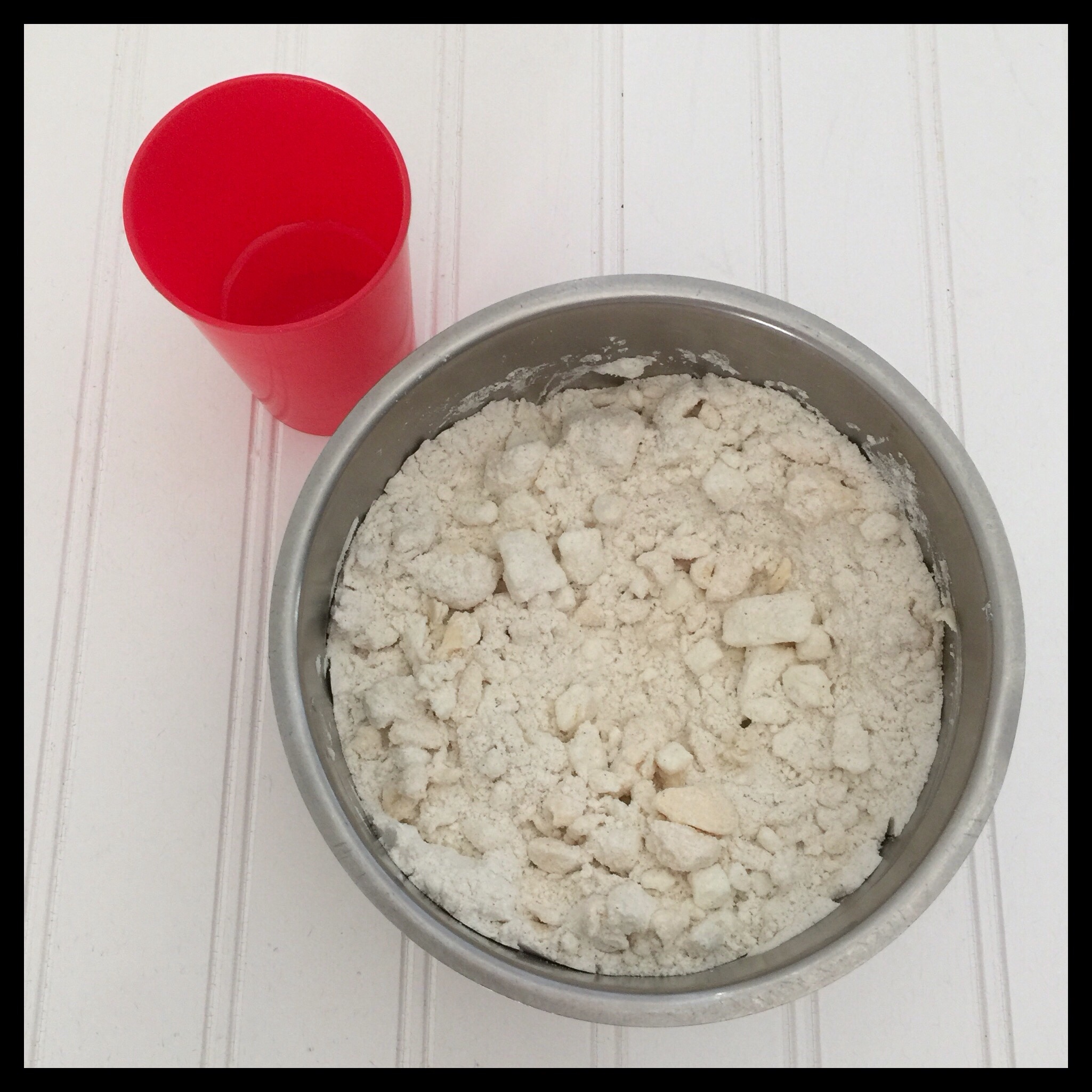
Use a pastry cutter or a sturdy fork to finish cutting the fats into the chilled flour mixture:
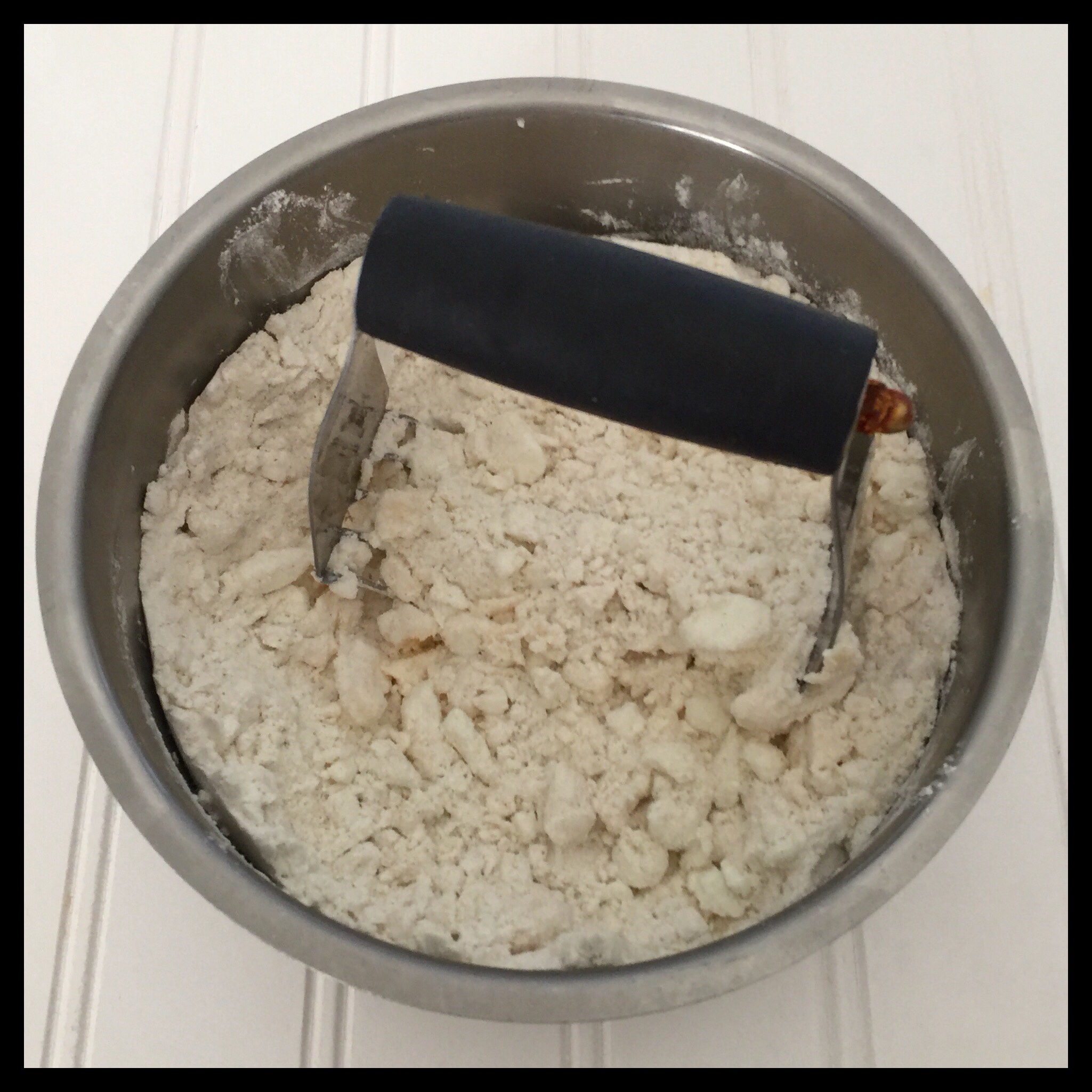
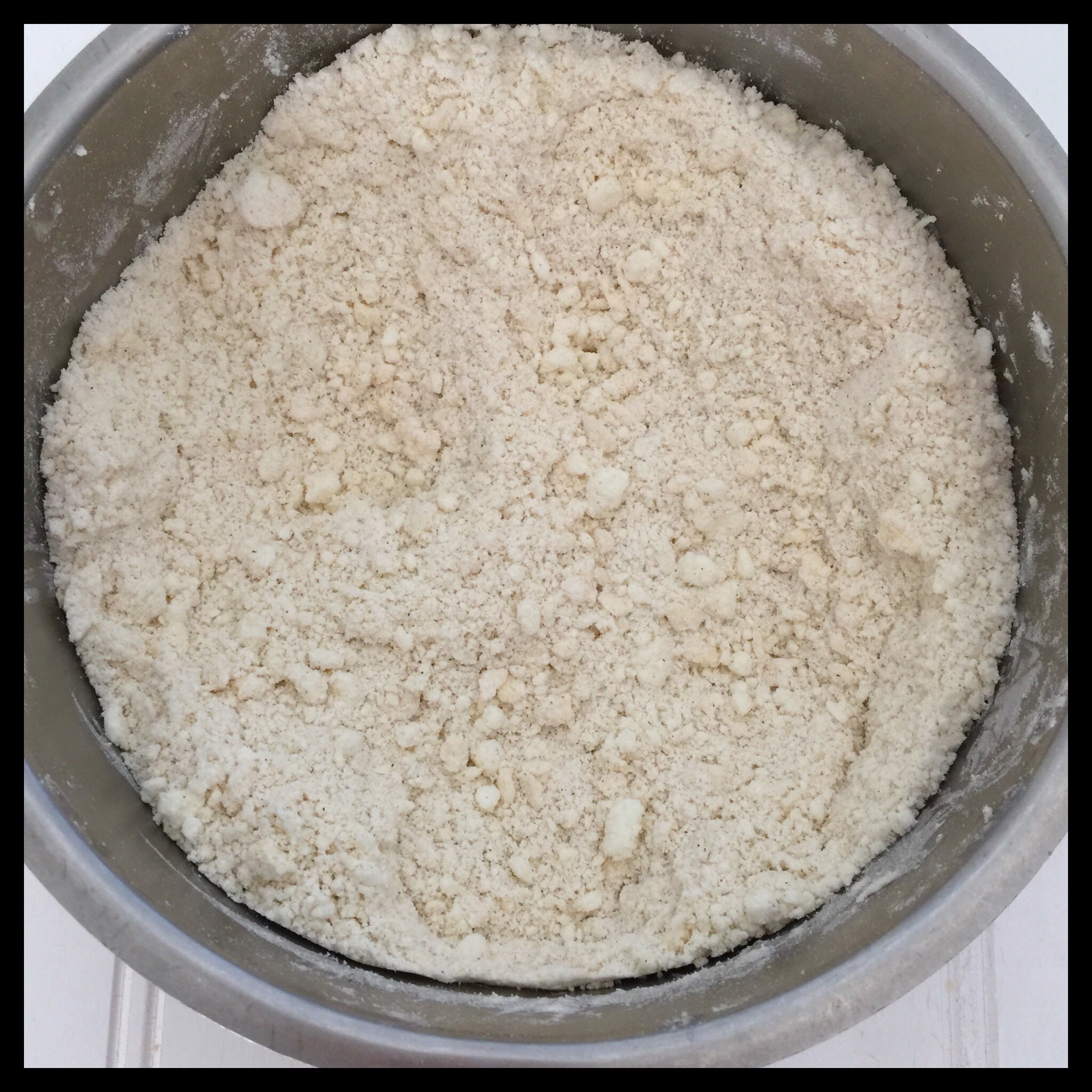
Make a well in the center, then pour in the chilled vodka water:
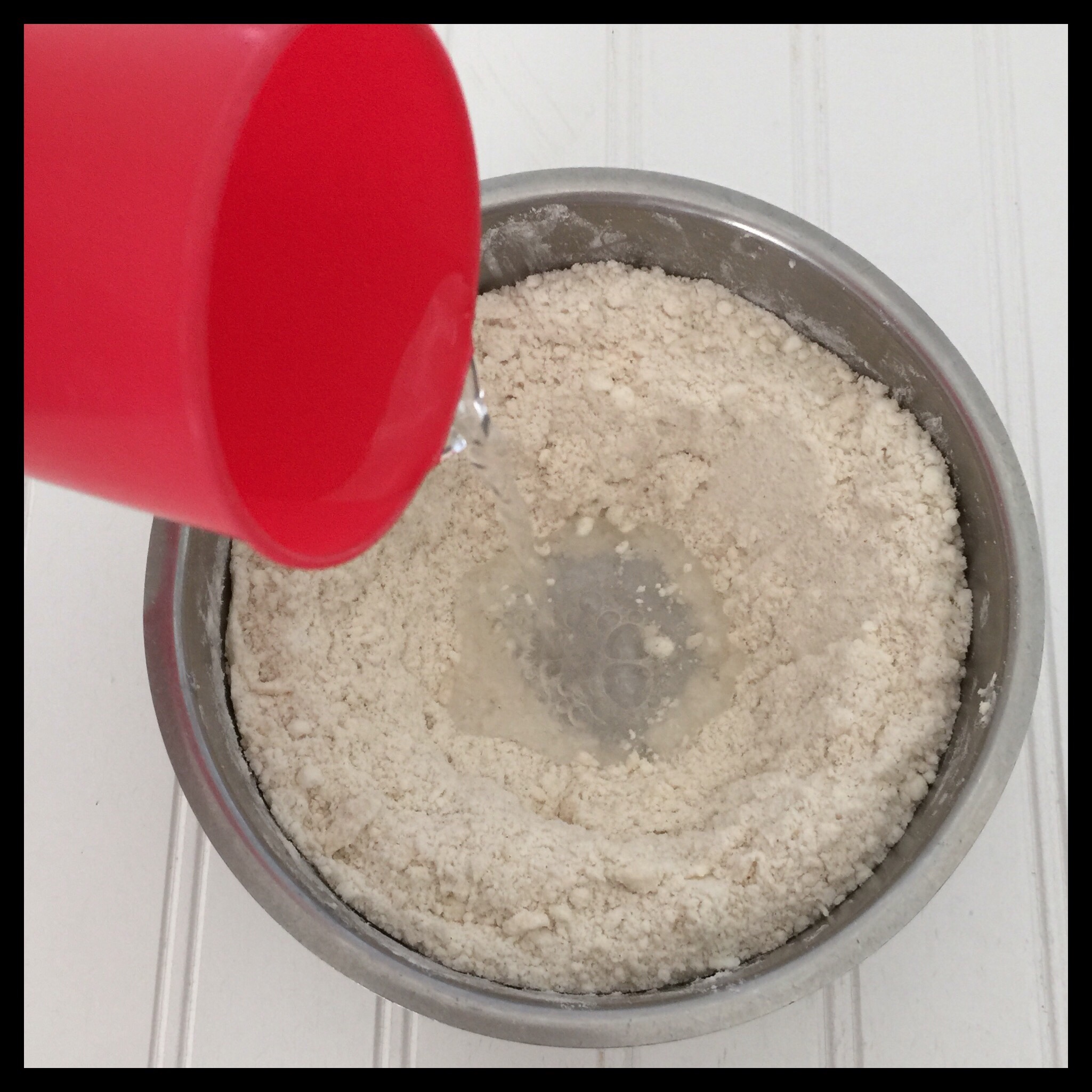
Stir with a sturdy fork to combine.
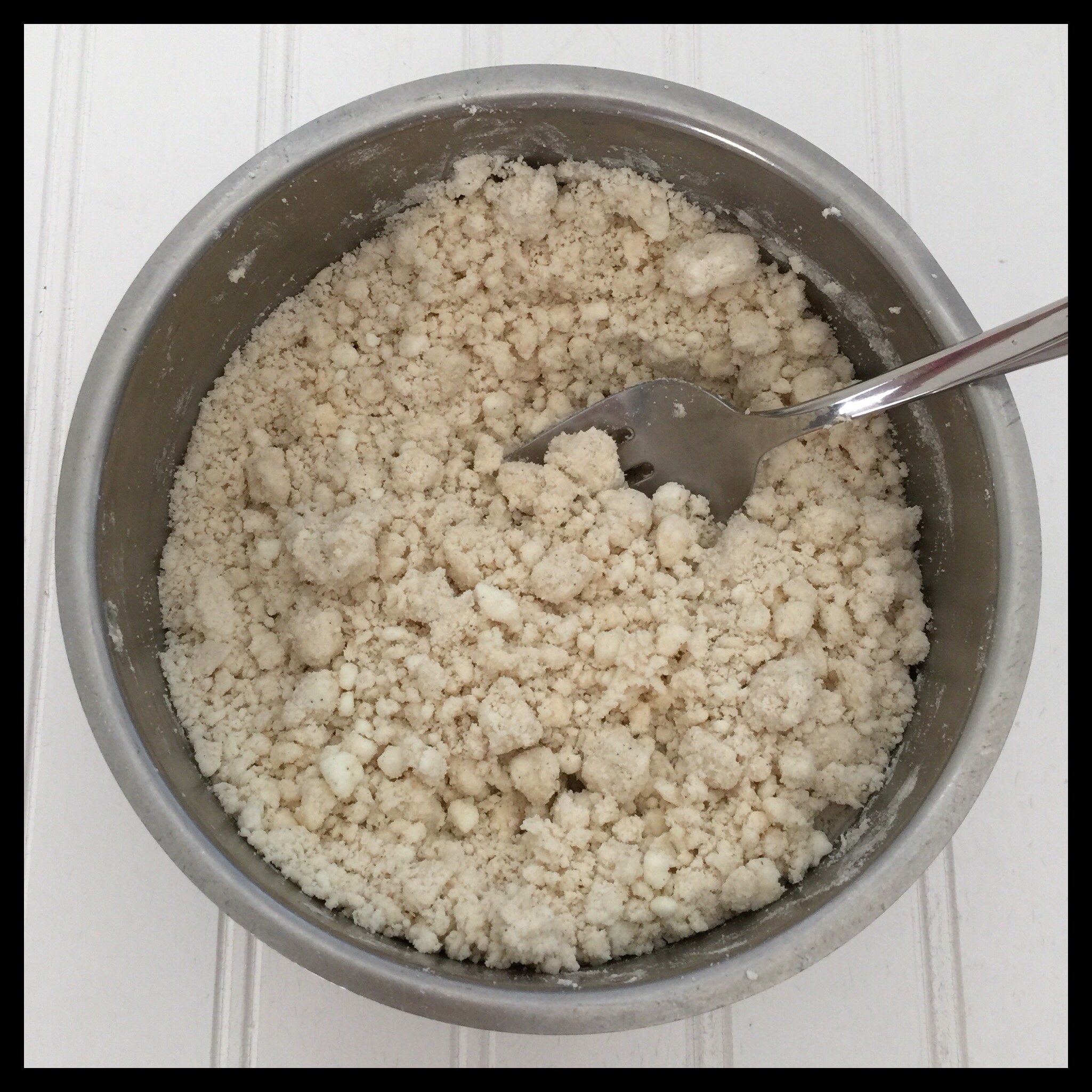
Depending on the weather and how cold your freezer is, the dough may or may not form a ball when mixing with the fork. If it does not, adding up to a tablespoon of additional liquid might be necessary. Since too much liquid can make your crust tough, though, I always switch to mixing by hand before adding more vodka water. If the heat from my hand brings the dough together quickly, I do not add any more. If the dough stays crumbly when mixing by hand, I will add a bit more liquid and then mix by hand again. Only add one teaspoon at a time as you want to add as little as possible.
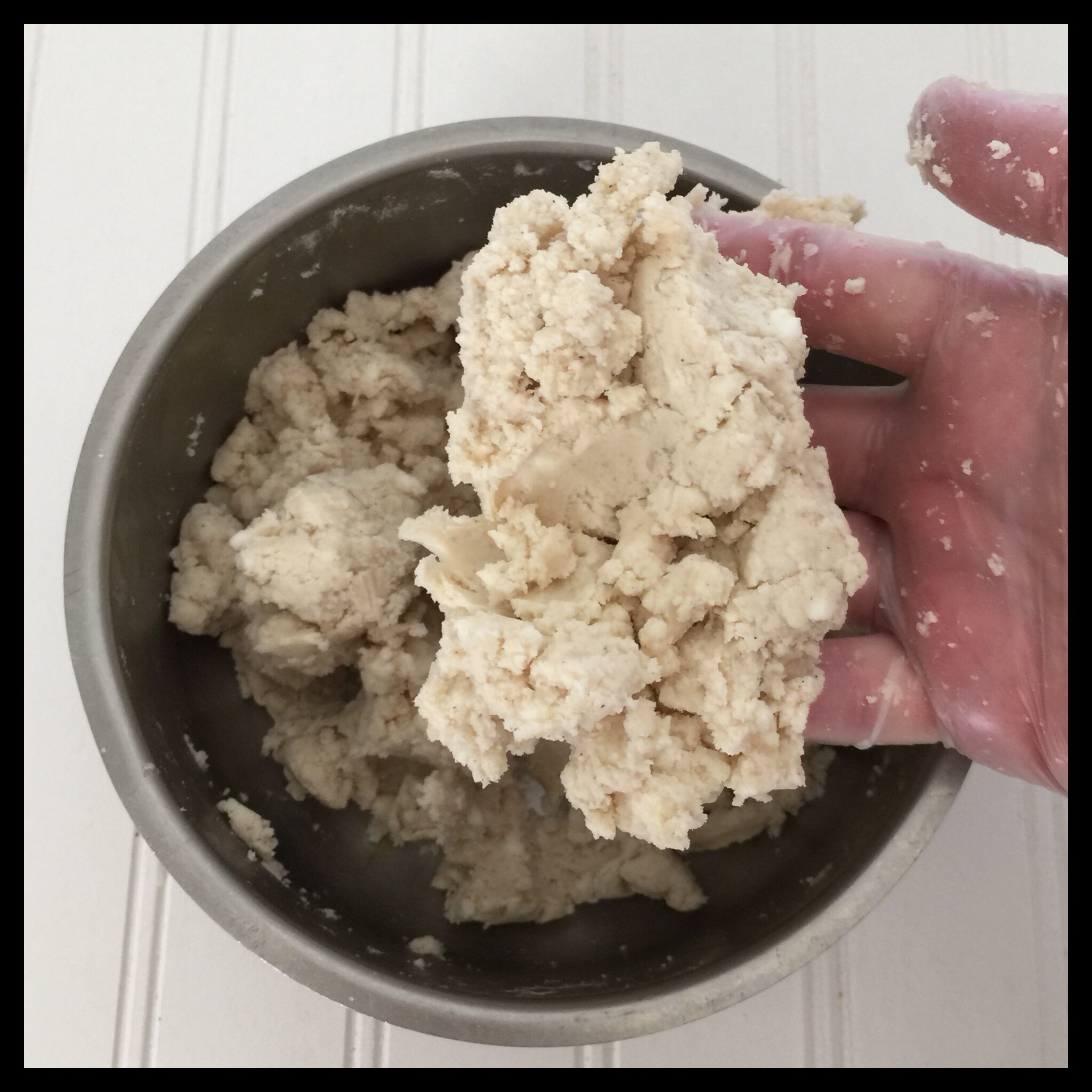
Form the dough into a ball with your hand:
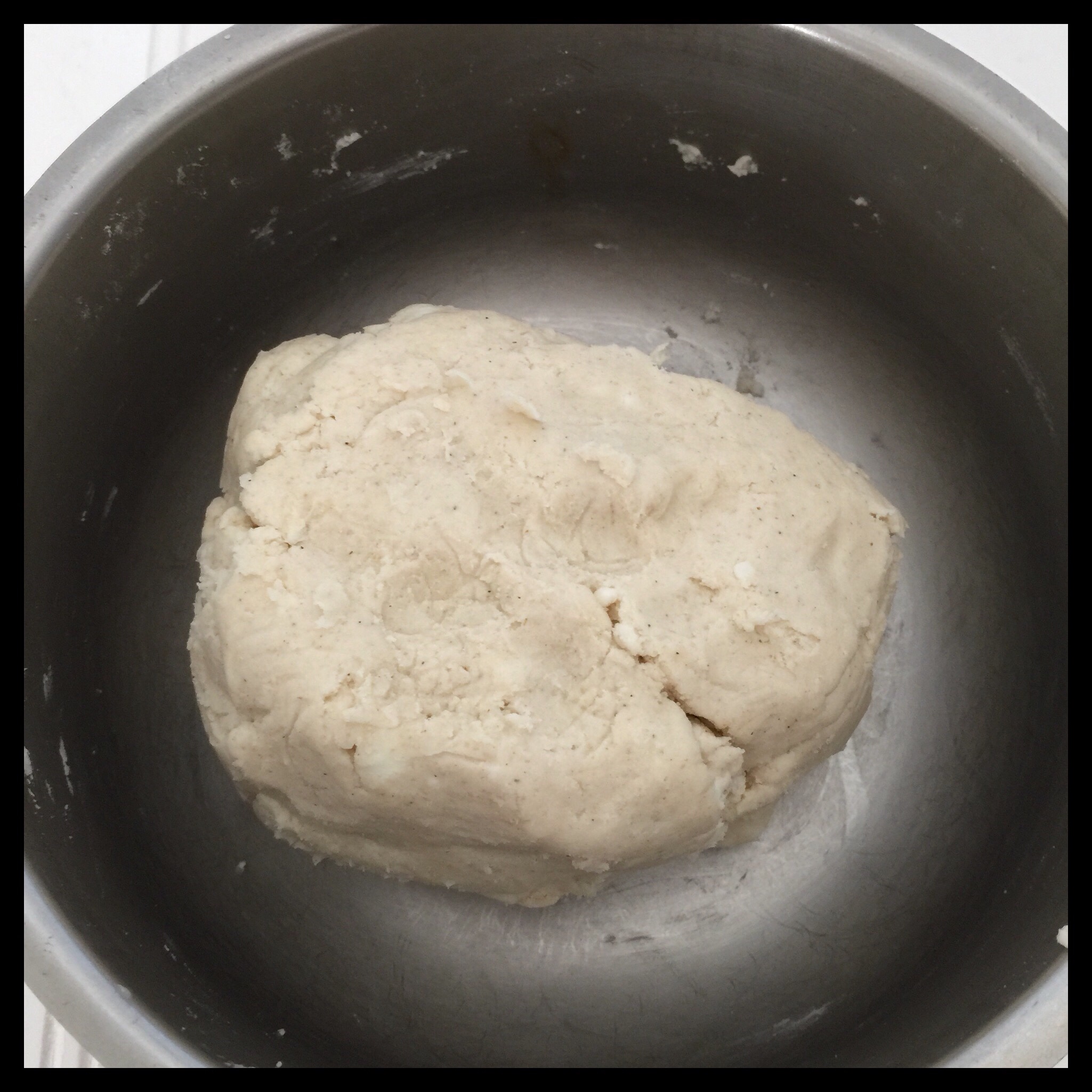
Press the dough into a disk, and wrap it tightly in plastic wrap. Chill in the fridge for an hour. (You can make the dough up to two days before you need it, but you will need to let it sit out at room temperature for a bit before rolling it out.)
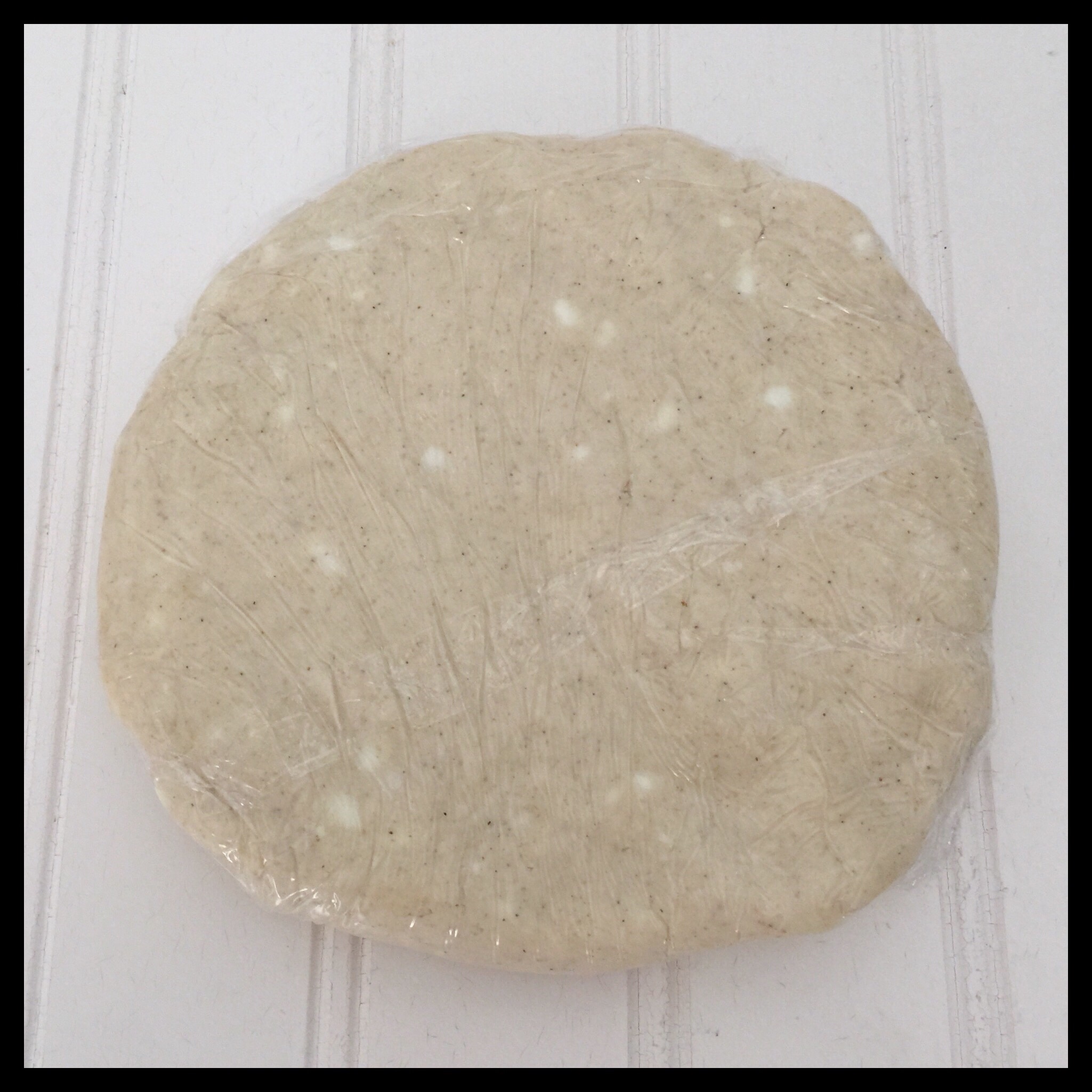
Place the chilled dough on a piece of waxed paper and cover it with a second piece:
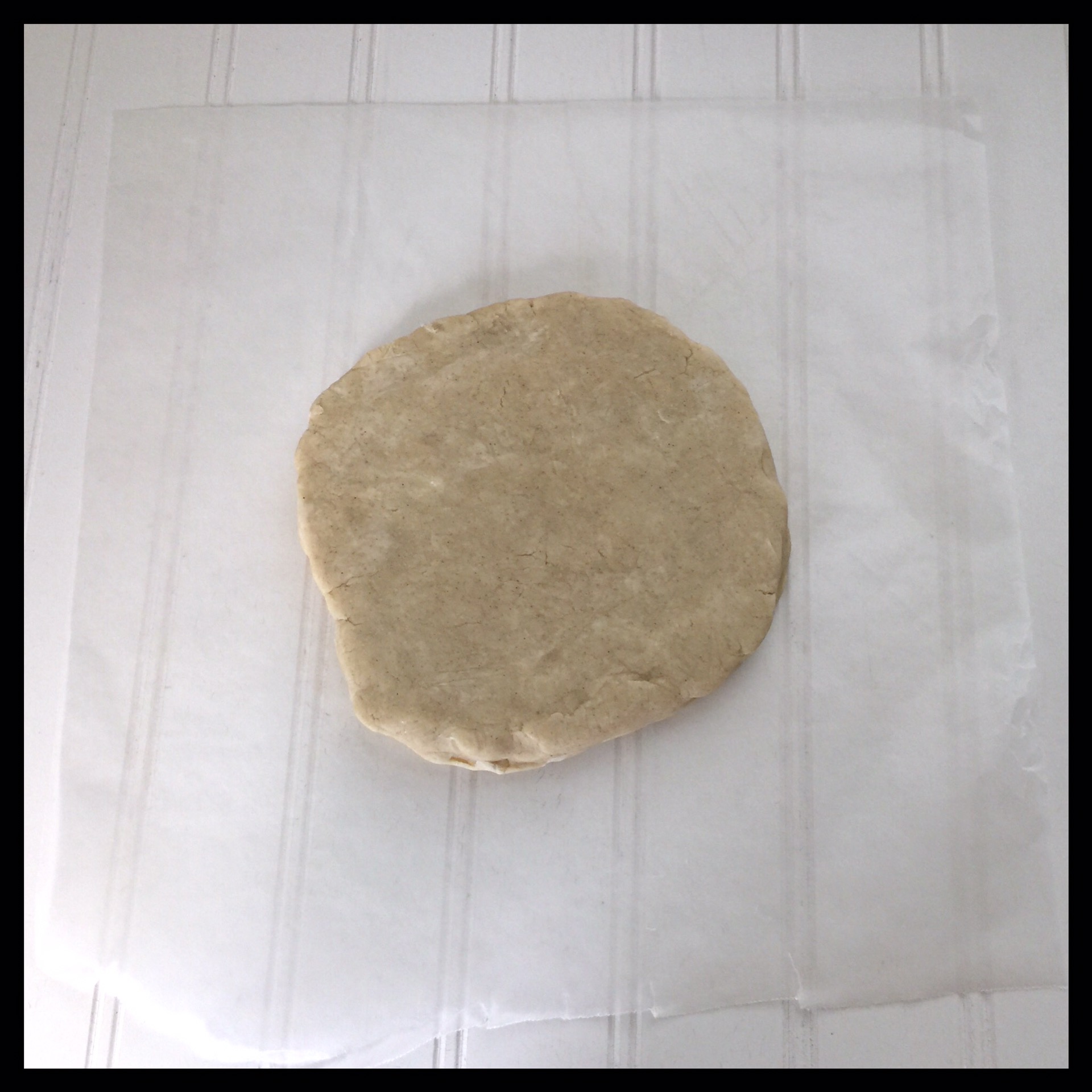
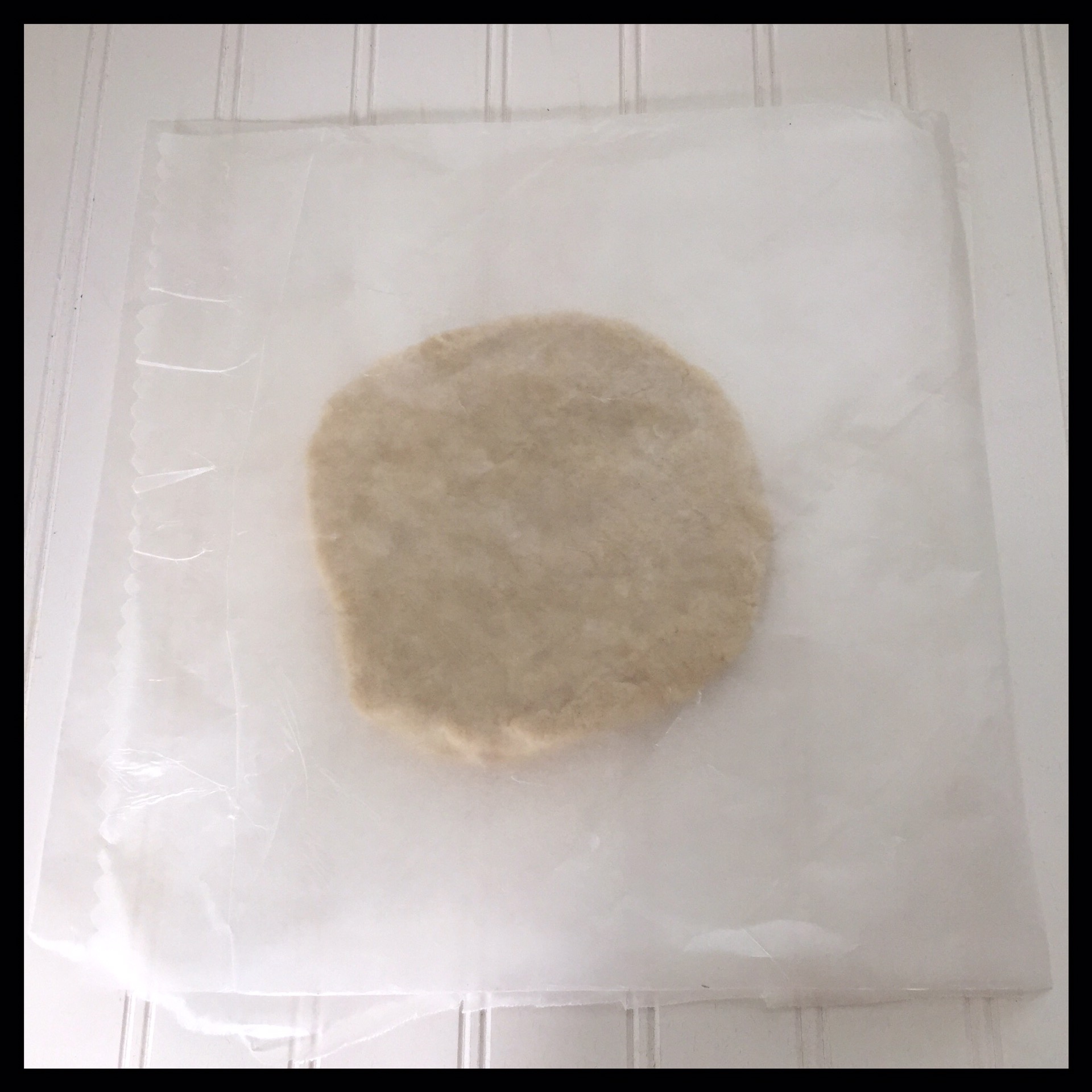
Roll out part way. To keep the circle even, rotate the crust frequently:
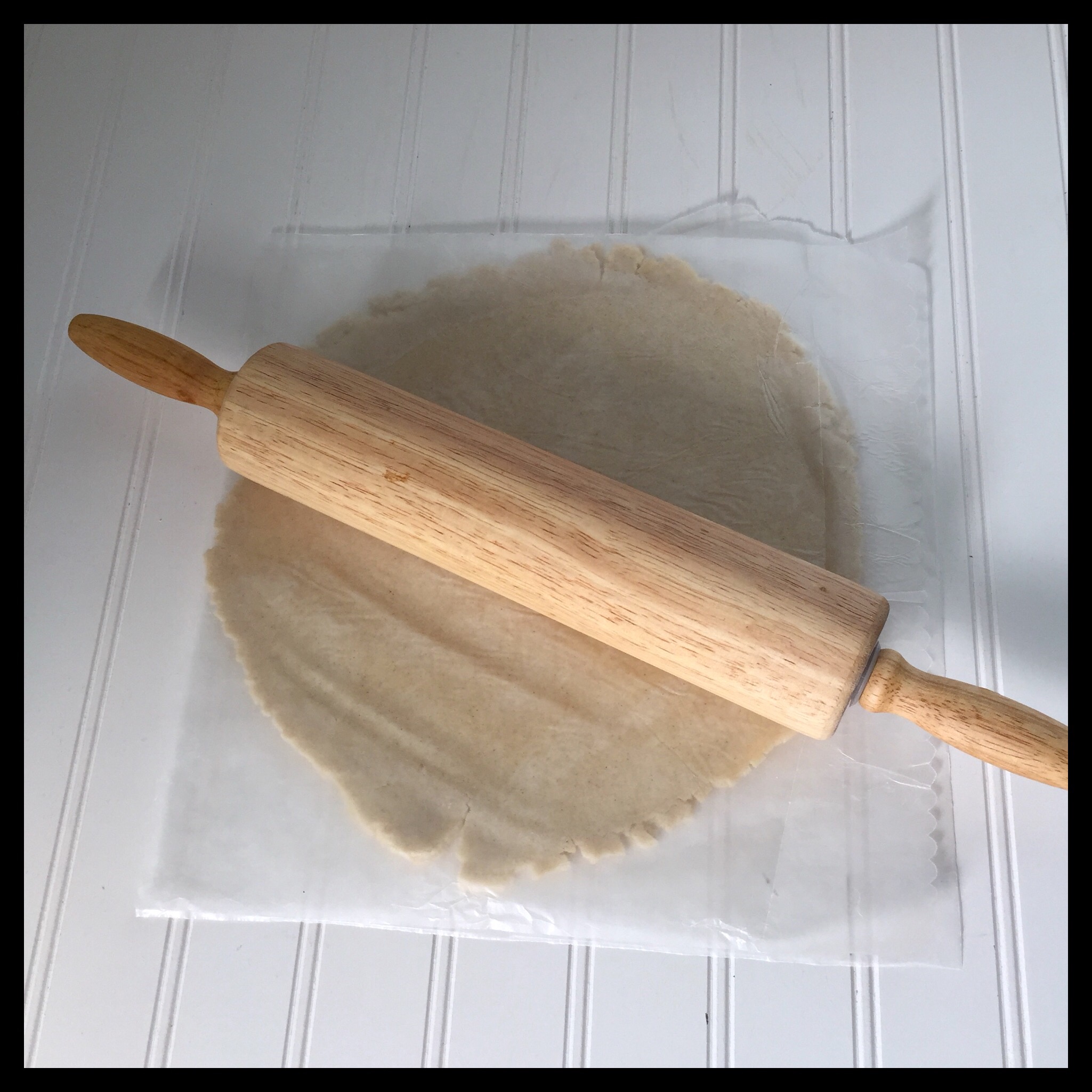
You will have uneven and cracked edges:

Shape the edge all the way around so there are no cracks and the edge is not too thin:
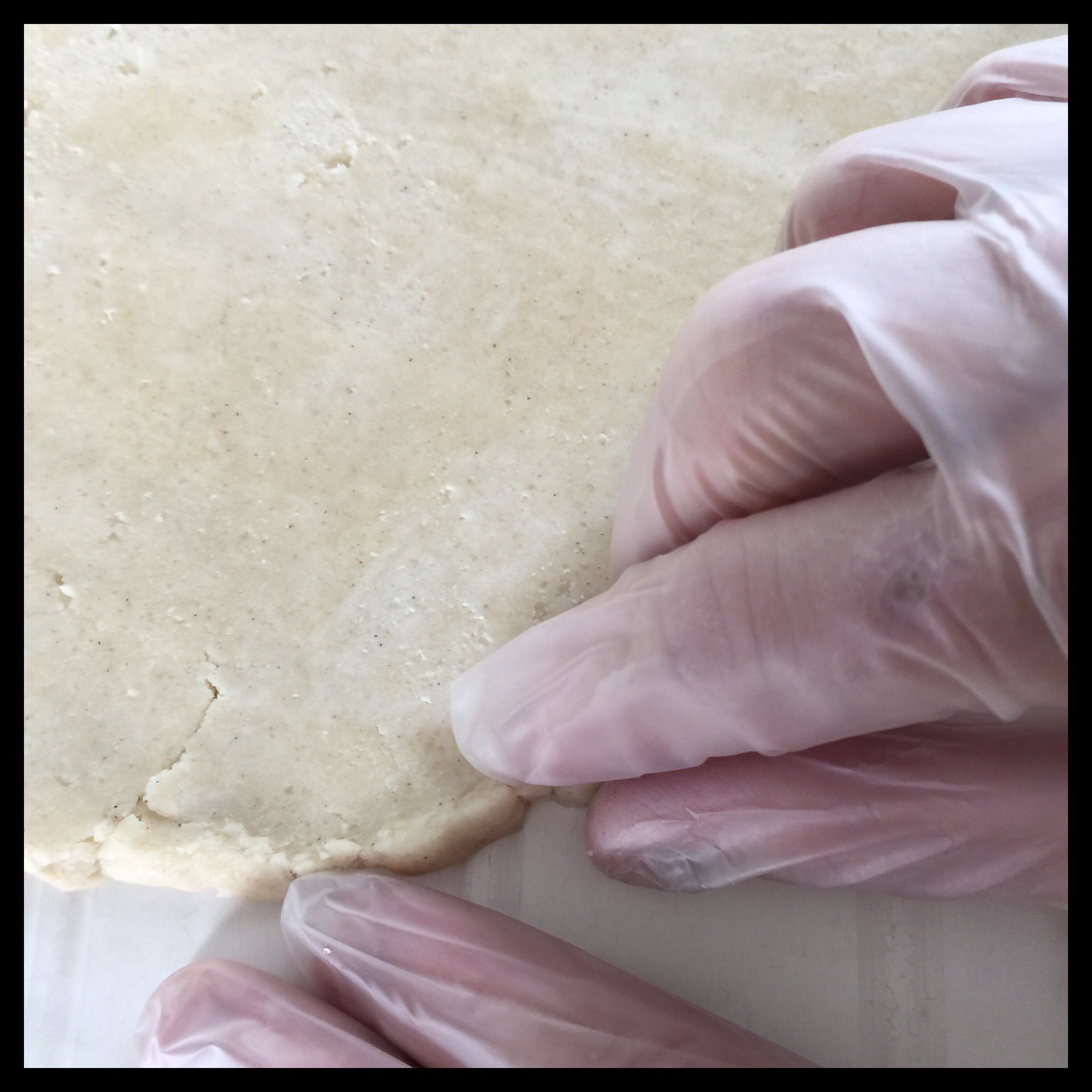
Continue rolling out your crust. Several times while rolling it out, I will flip the crust over, peel off what is now the top piece of waxed paper, and replace it before continuing. This prevents wrinkles in the paper and makes for a more uniform crust.

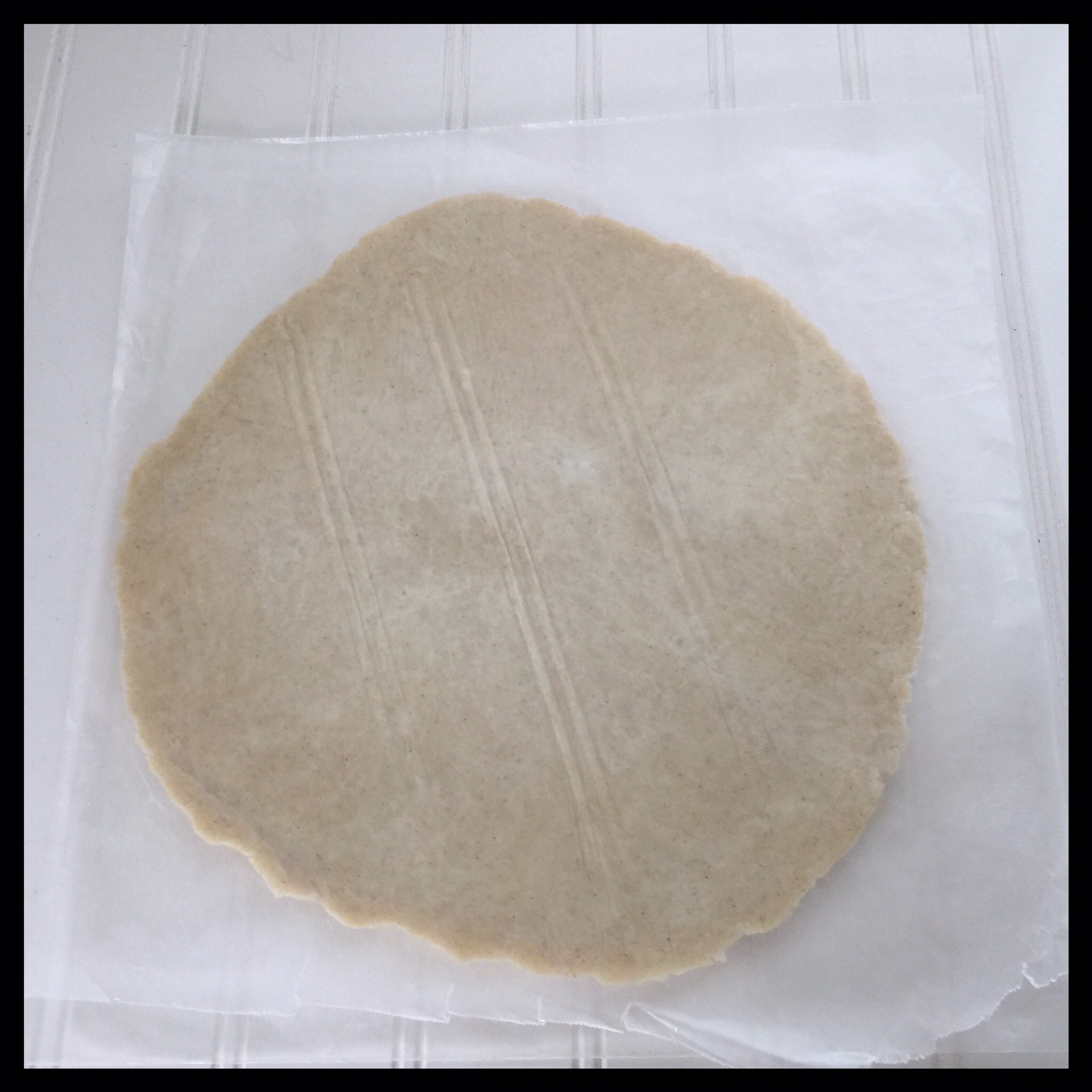
Your crust needs to be about 1 1/4” bigger around than your upside down pie pan. This recipe works well for a deep dish 9 1/2″ pan or a regular 10” pan. You can also use a regular 9” pan and just trim off any excess dough.
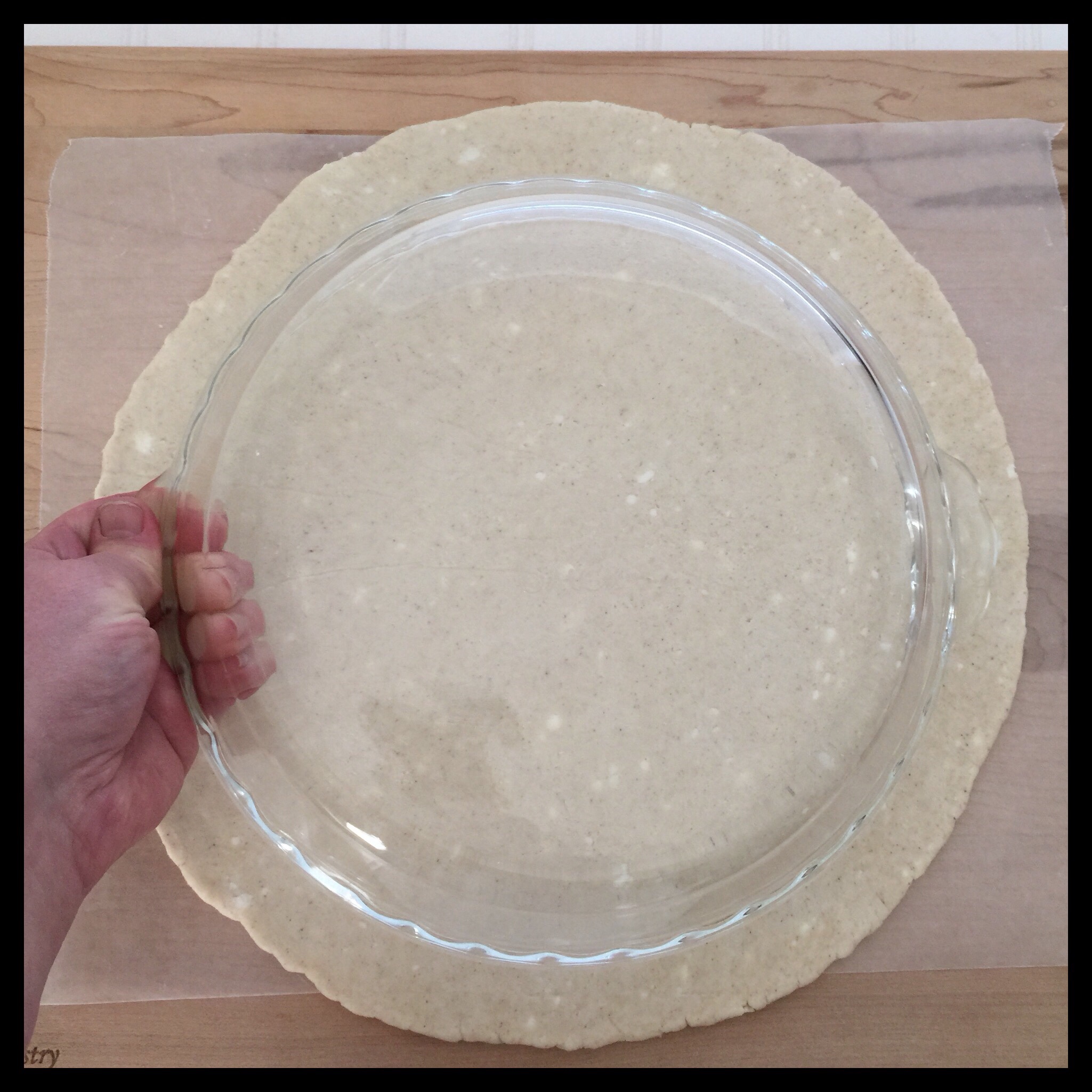
Remove the top piece of waxed paper, invert the crust into your pie pan, and carefully peel off the waxed paper that is now on top.
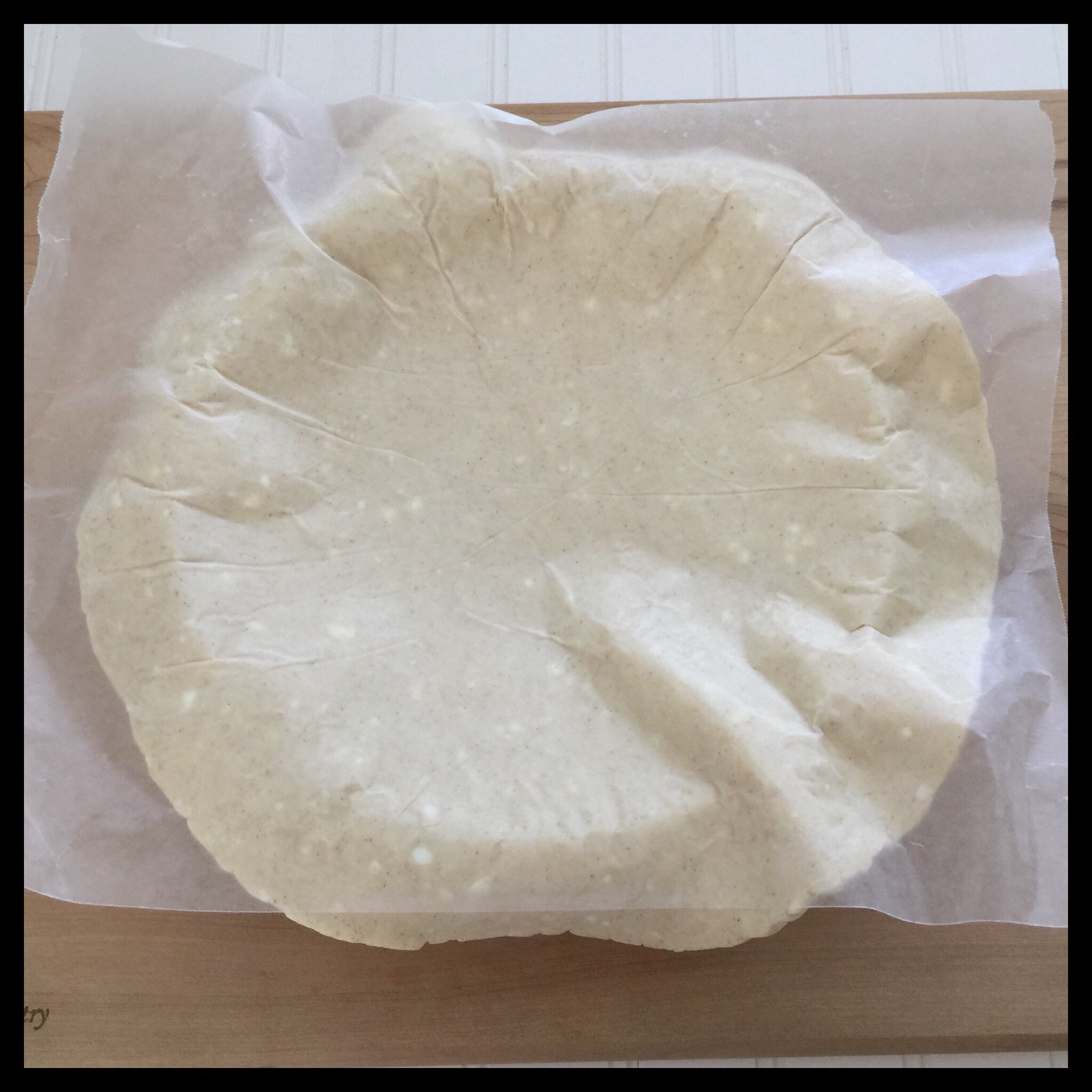
Gently lift the edges and press the dough into the pan, then carefully peel off the waxed paper:
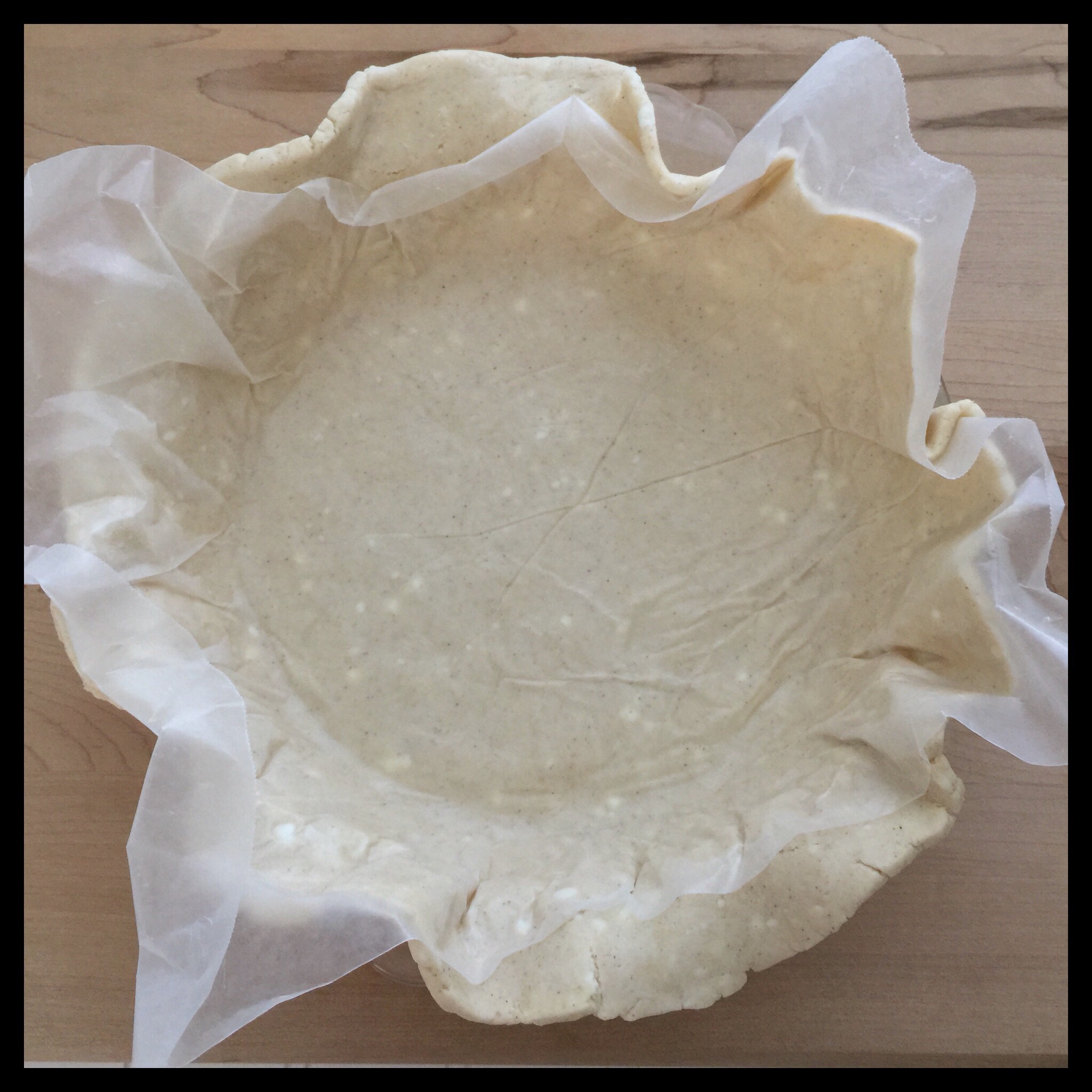
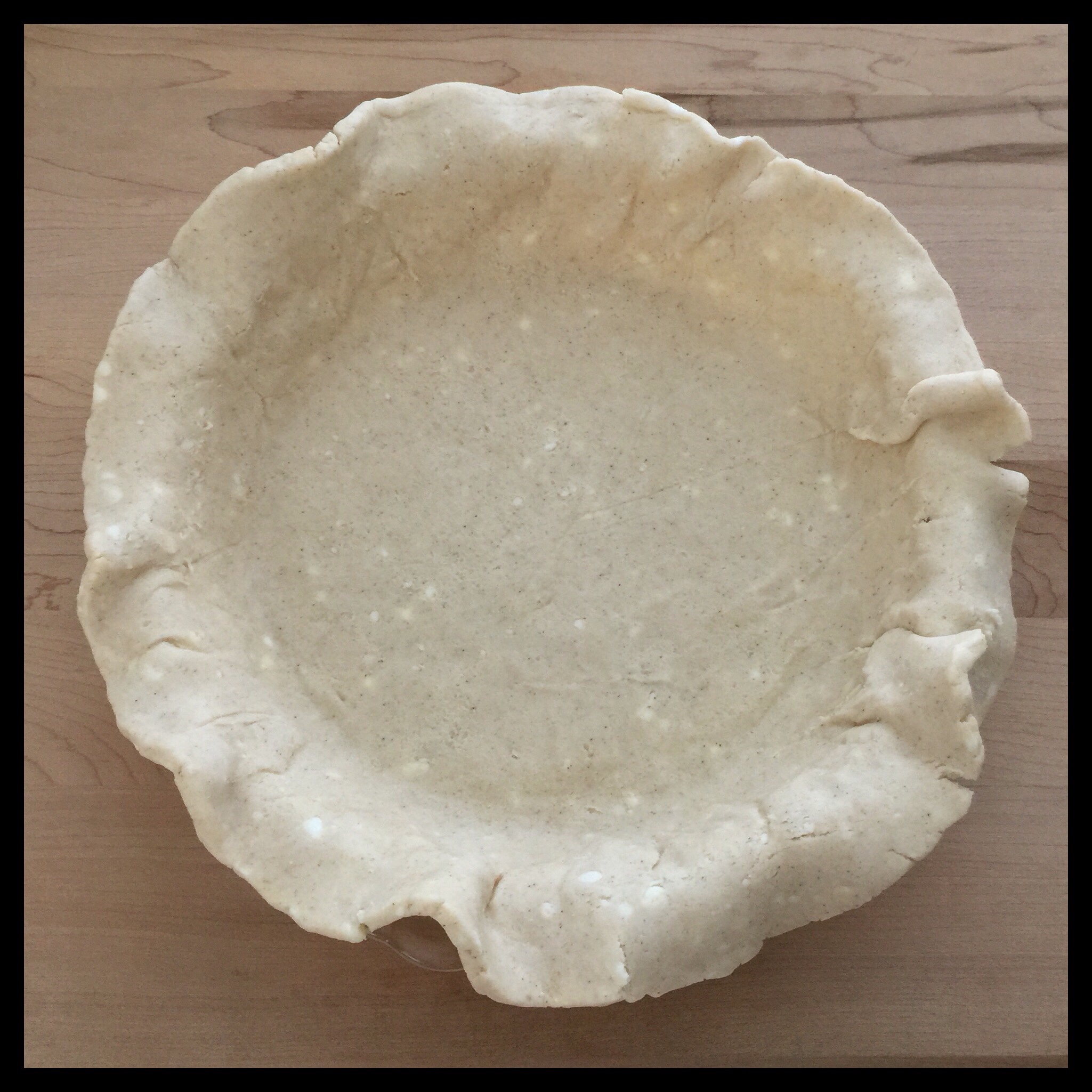
Fold the edge under all the way around to create a double thickness of dough:
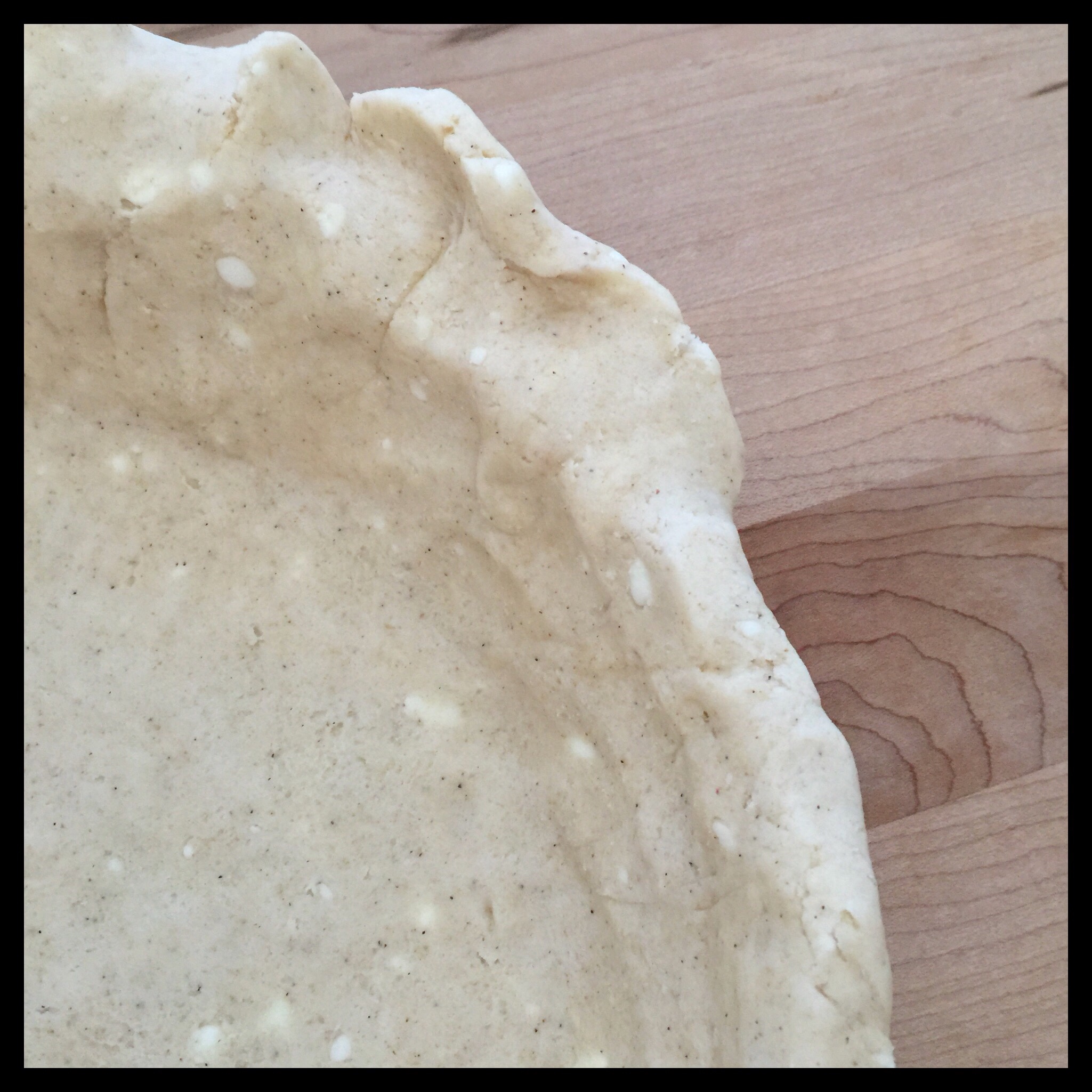
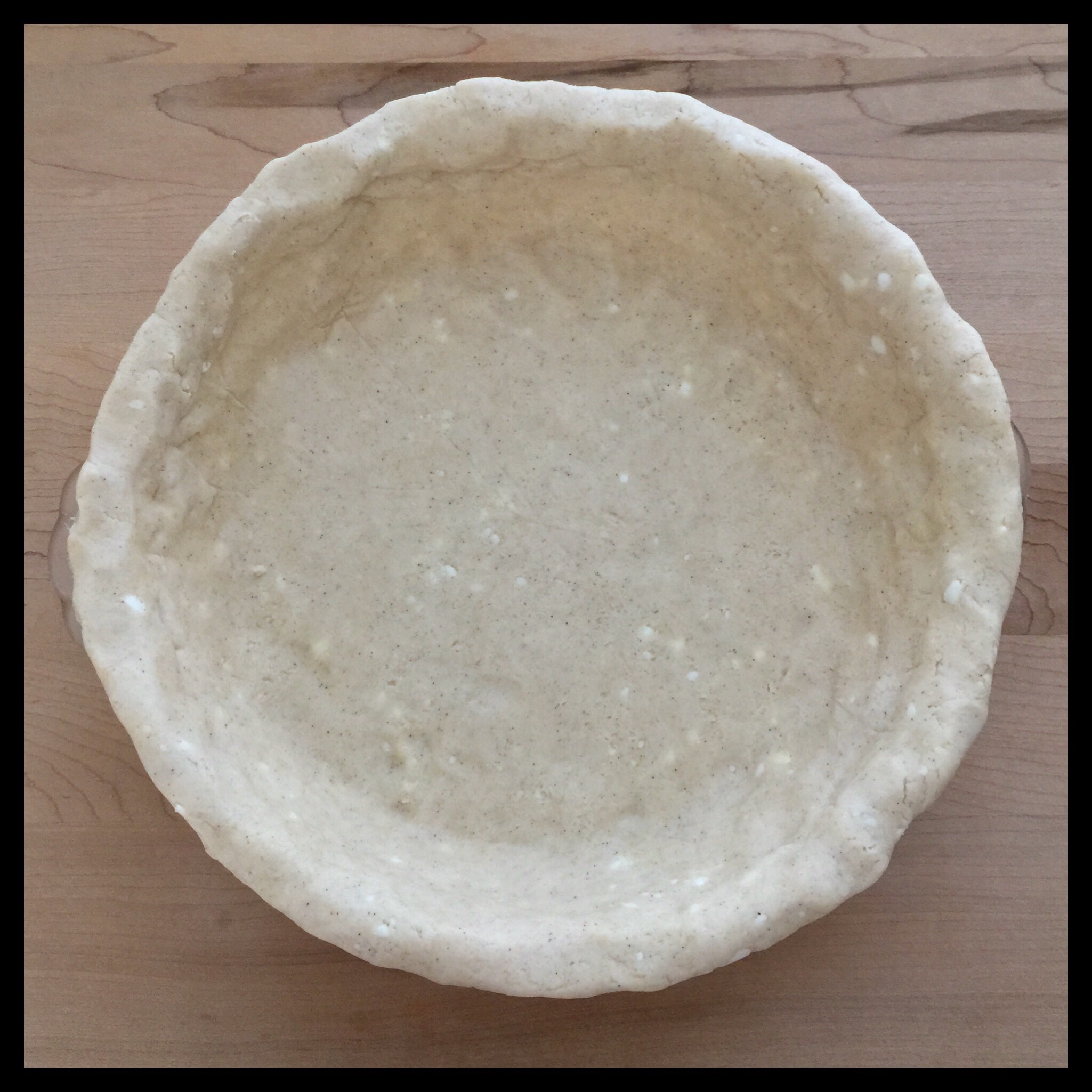
Crimp the edge, then put your crust into the fridge to chill for 30 minutes.
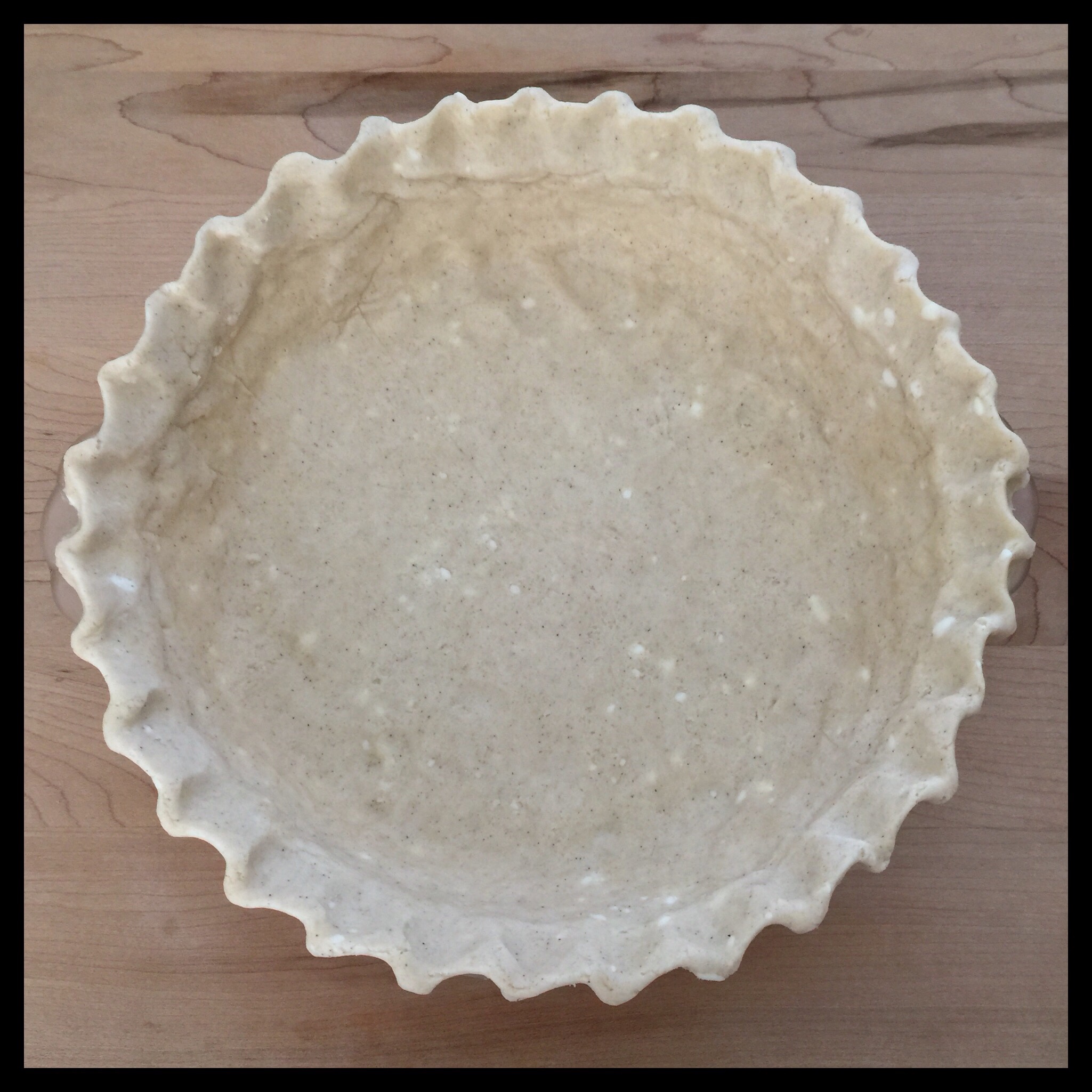
For a baked custard pie (like pumpkin pie), you will add your filling to the chilled crust and bake according to the pie recipe directions. Preheat your oven to the temperature required in your recipe.
To blind bake your crust, preheat your oven to 375 degrees Fahrenheit while you are waiting for the crust to chill.
My grandmother never used pie weights and neither do I. Pie weights are a real pain to use, and the bottom of the crust doesn’t cook nicely when covered with them. If your dough is well-chilled and you dock the dough properly, you should not need pie weights and will save yourself a lot of work. Use a fork to dock (prick) the crust all over, except for the top edge. It should look like this:
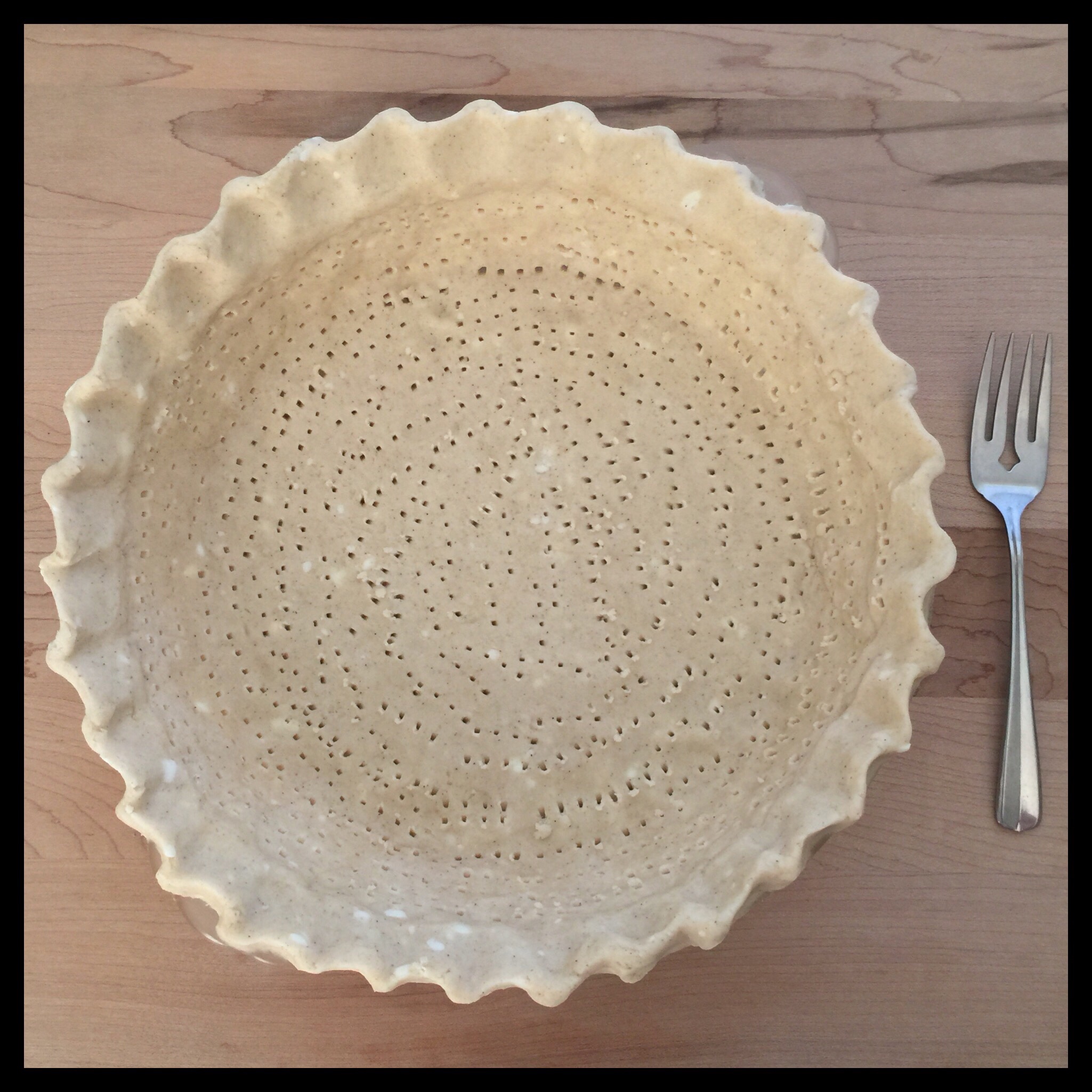
Immediately put your crust in your preheated oven, and bake for about 30 minutes until it is a light golden brown all over. (If you forgot to preheat your oven, put the docked crust back into the fridge until the oven is ready. The crust needs to be cold when it goes into the oven.)
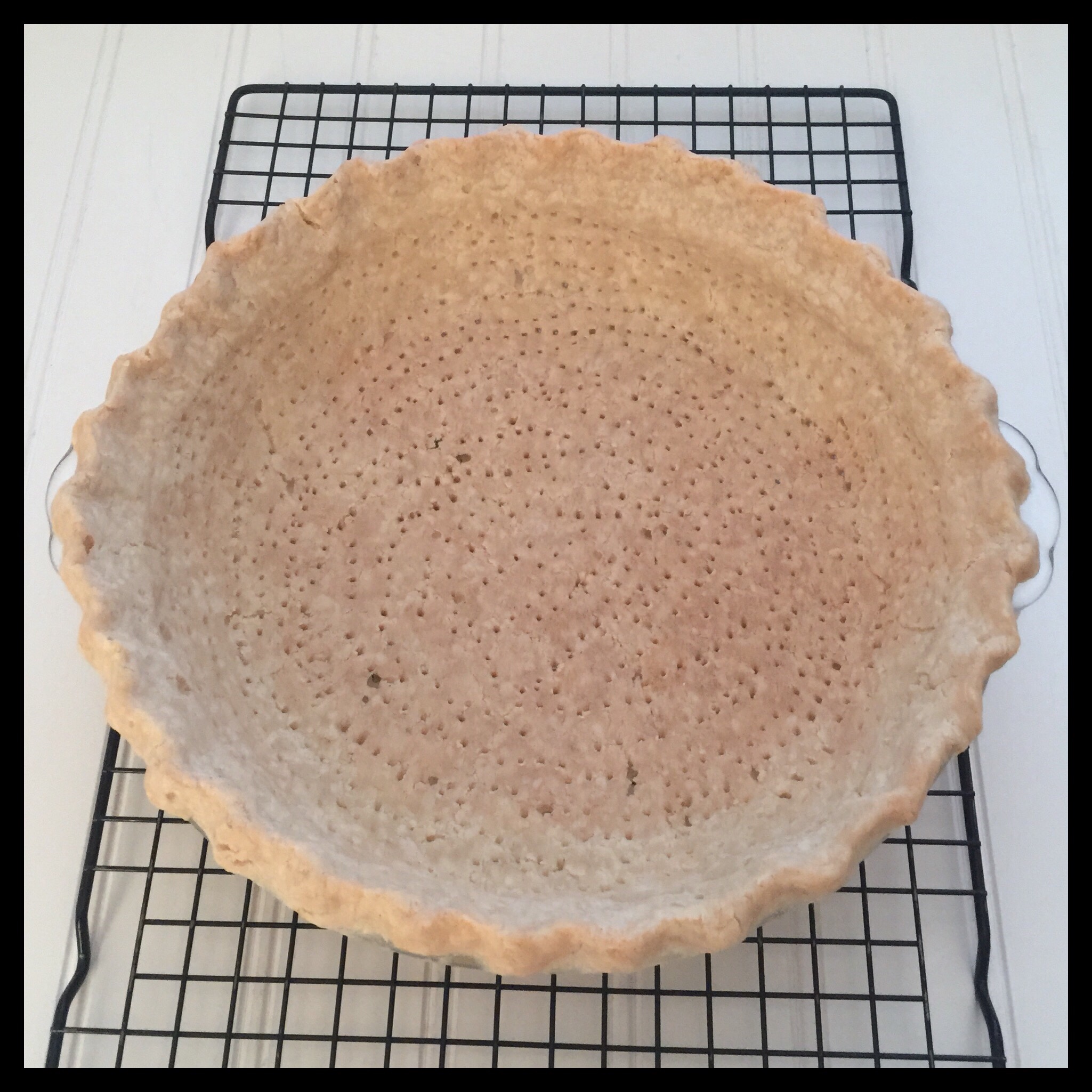
Allow your baked crust to cool completely before adding your filling. I used this crust to make a lovely banana cream pie! (Recipe coming up soon!)
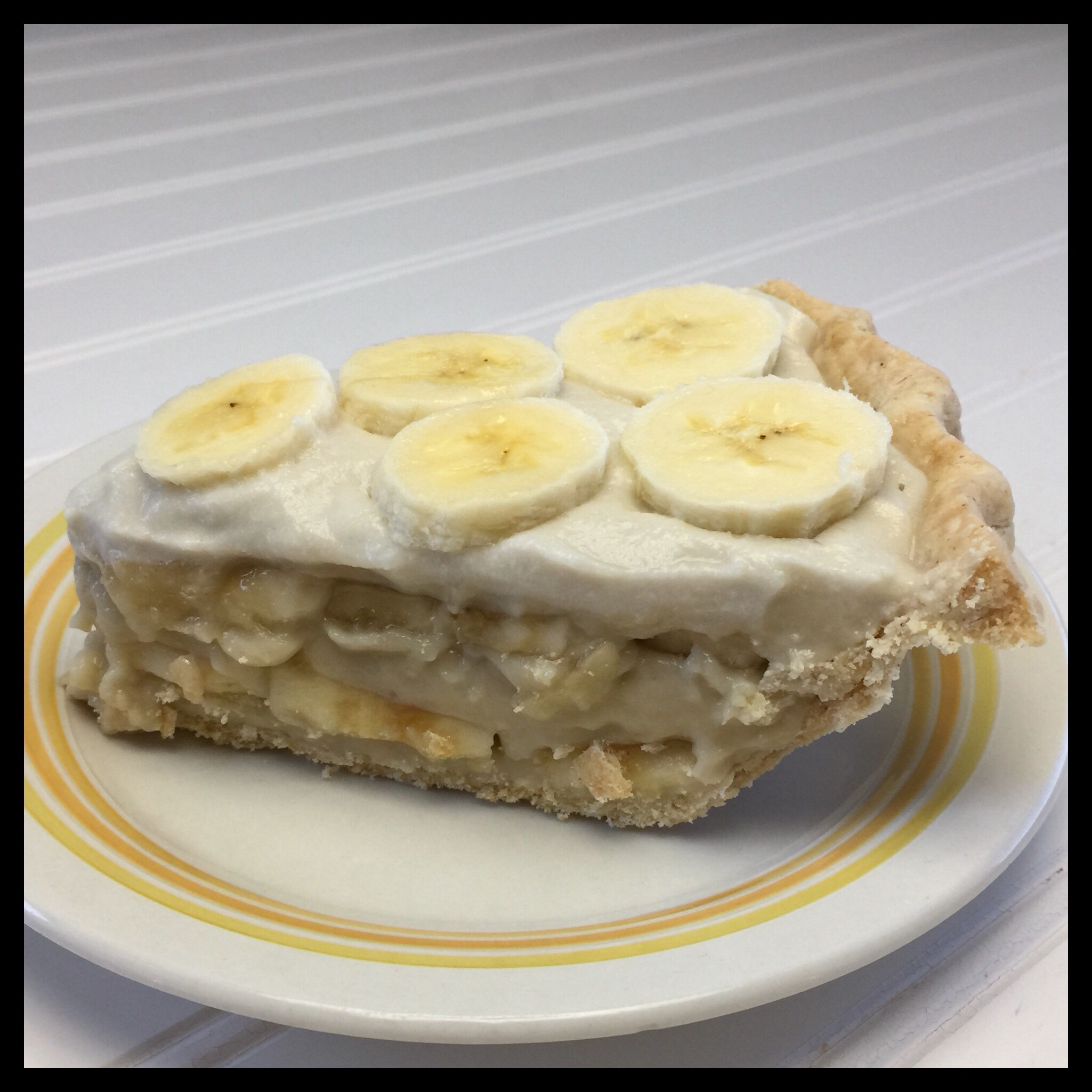
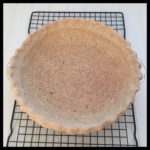
How to Make & Blind Bake a Single Pie Crust (Vegan & Gluten Free)
Use this recipe to make a perfect single pie crust!
Ingredients
- 210 g (1 5/8 c) Gluten Free Flour Blend (See recipe notes below!)
- 14 g (1 TBS + 1/2 tsp) Vegan Sugar
- 2.4 g (3/8 tsp) Salt
- 46 g (3 TBS + 1 tsp) Vegan Butter
- 66 g (5 1/2 TBS) Shortening
- 35 g (2 TBS + 1 tsp) Water
- 35 g (2 TBS + 1 tsp) Vodka
Instructions
-
Add the flour, sugar, and salt to a mixing bowl. Whisk together, then add the shortening and Earth Balance. I use Earth Balance Original Spread and Spectrum Organic Shortening, and I have not tested the recipe with any other brands.
-
Use two knives to cut up the fats into 3/4″ size pieces that are coated with the flour mixture.
-
Combine the water and vodka, then place both the liquid mixture and the flour mixture in the freezer for 20 minutes. Using half vodka makes it possible to add sufficient liquid for a pliable dough without ending up with a tough crust. I never use all water and my crusts are always flaky and perfect. (Note: do not leave the mixtures in the freezer longer than 20 minutes, or the fats will be too hard to cut in properly and your vodka water may freeze.)
-
Use a pastry cutter or a sturdy fork to finish cutting the fats into the chilled flour mixture. Make a well in the center, then pour in the chilled vodka water. Stir with a sturdy fork to combine. Depending on the weather and how cold your freezer is, the dough may or may not form a ball when mixing with the fork. If it does not, adding up to a tablespoon of additional liquid might be necessary. Since too much liquid can make your crust tough, though, I always switch to mixing by hand before adding more vodka water. If the heat from my hand brings the dough together quickly, I do not add any more. If the dough stays crumbly when mixing by hand, I will add a bit more liquid and then mix by hand again. Only add one teaspoon at a time as you want to add as little as possible.
-
Form the dough into a ball with your hand. Press the dough into a disk, and wrap it tightly in plastic wrap. Chill in the fridge for an hour. (You can make the dough up to two days before you need it, but you will need to let it sit out at room temperature for a bit before rolling it out.)
-
Place the chilled dough on a piece of waxed paper and cover it with a second piece. Roll out part way. To keep the circle even, rotate the crust frequently. You will have uneven and cracked edges. Shape the edge all the way around so there are no cracks and the edge is not too thin. Continue rolling out your crust. Several times while rolling it out, I will flip the crust over, peel off what is now the top piece of waxed paper, and replace it before continuing. This prevents wrinkles in the paper and makes for a more uniform crust. Your crust needs to be about 1 1/4” bigger around than your upside down pie pan. This recipe works well for a deep dish 9 1/2″ pan or a regular 10” pan. You can also use a regular 9” pan and just trim off any excess dough.
-
Remove the top piece of waxed paper, invert the crust into your pie pan, and carefully peel off the waxed paper that is now on top. Gently lift the edges and press the dough into the pan, then carefully peel off the waxed paper.
-
Fold the edge under all the way around to create a double thickness of dough. Crimp the edge, then put your crust into the fridge to chill for 30 minutes.
-
For a baked custard pie (like pumpkin pie), you will add your filling to the chilled crust and bake according to the pie recipe directions. Preheat your oven to the temperature required in your recipe.
-
To blind bake your crust, preheat your oven to 375 degrees Fahrenheit while you are waiting for the crust to chill. Use a fork to dock (prick) the chilled crust all over, except for the top edge. Immediately put your crust in your preheated oven, and bake for about 30 minutes until it is a light golden brown all over. (If you forgot to preheat your oven, put the docked crust back into the fridge until the oven is ready. The crust needs to be cold when it goes into the oven.) Allow your baked crust to cool completely on a rack before adding your filling.
Recipe Notes
- I highly recommend using a scale to weigh your ingredients, especially the liquids and the flour. Too much or too little of either can easily ruin your biscuits, and measuring errors are extremely common.
- I use Freely Vegan flour to make pie crust, but my two-ingredient gluten free flour blend also works very well. I have not tested this recipe with all of my other DIY GF flour blends. Most should work, but you may not get the results shown here. I have tested this recipe with Bob's Red Mill 1:1 gluten free flour blend and got pretty good results. The texture of the Bob's was not as fabulous as mine, but was still good.
- Use my double crust recipe if you are making a pie with both a bottom and top crust. Use this one for any single crust pie, whether or not you will be blind baking it. It makes ten percent more dough than half of my double crust recipe does. This makes it possible to roll the dough out to a large enough circle to be able to fold the edge over for a double thick edge.
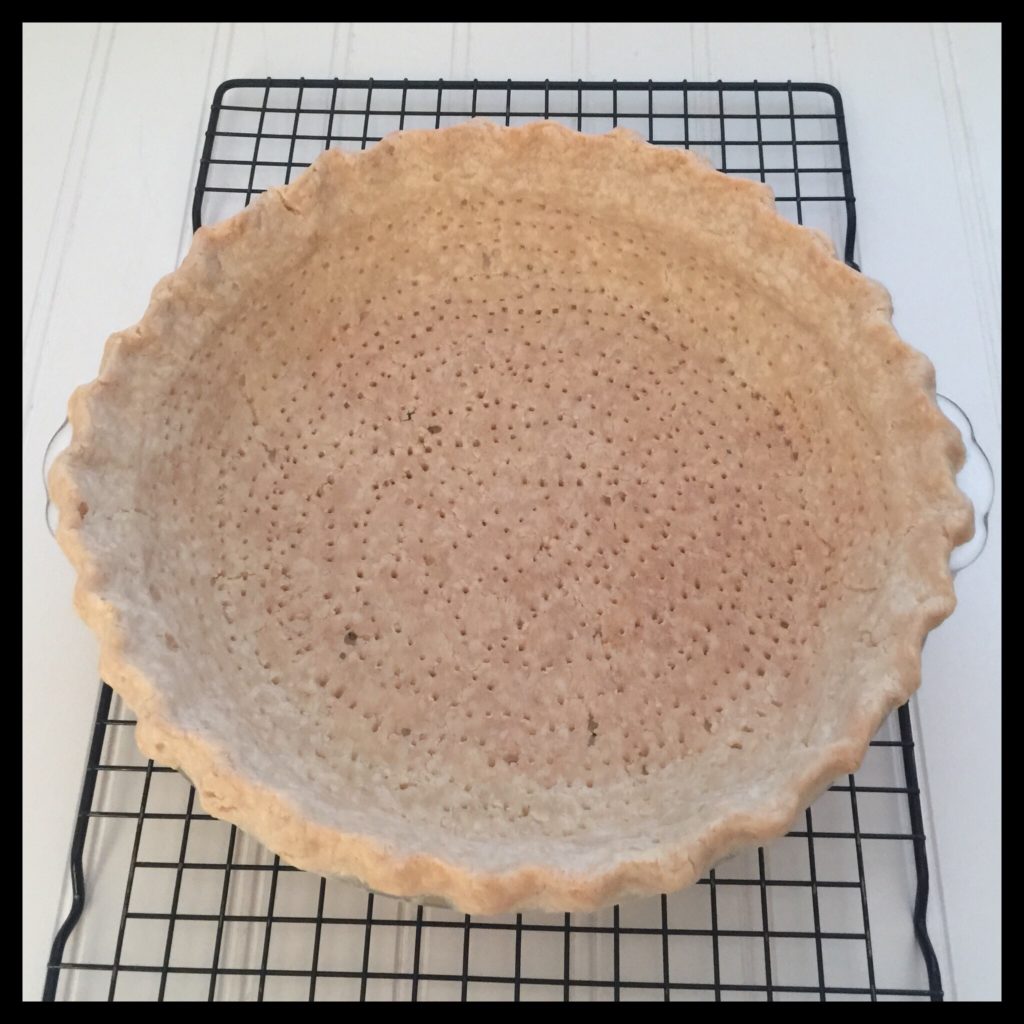

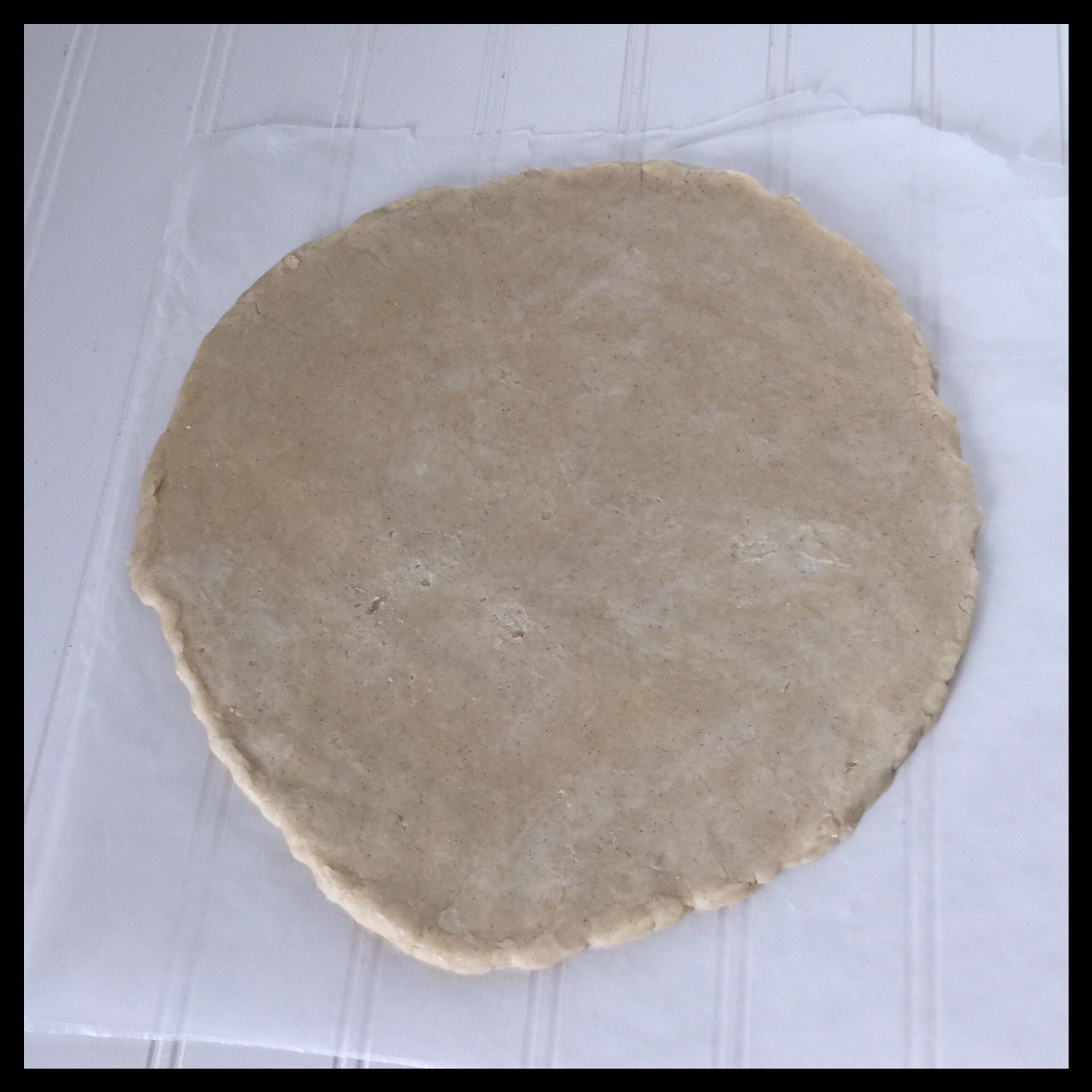
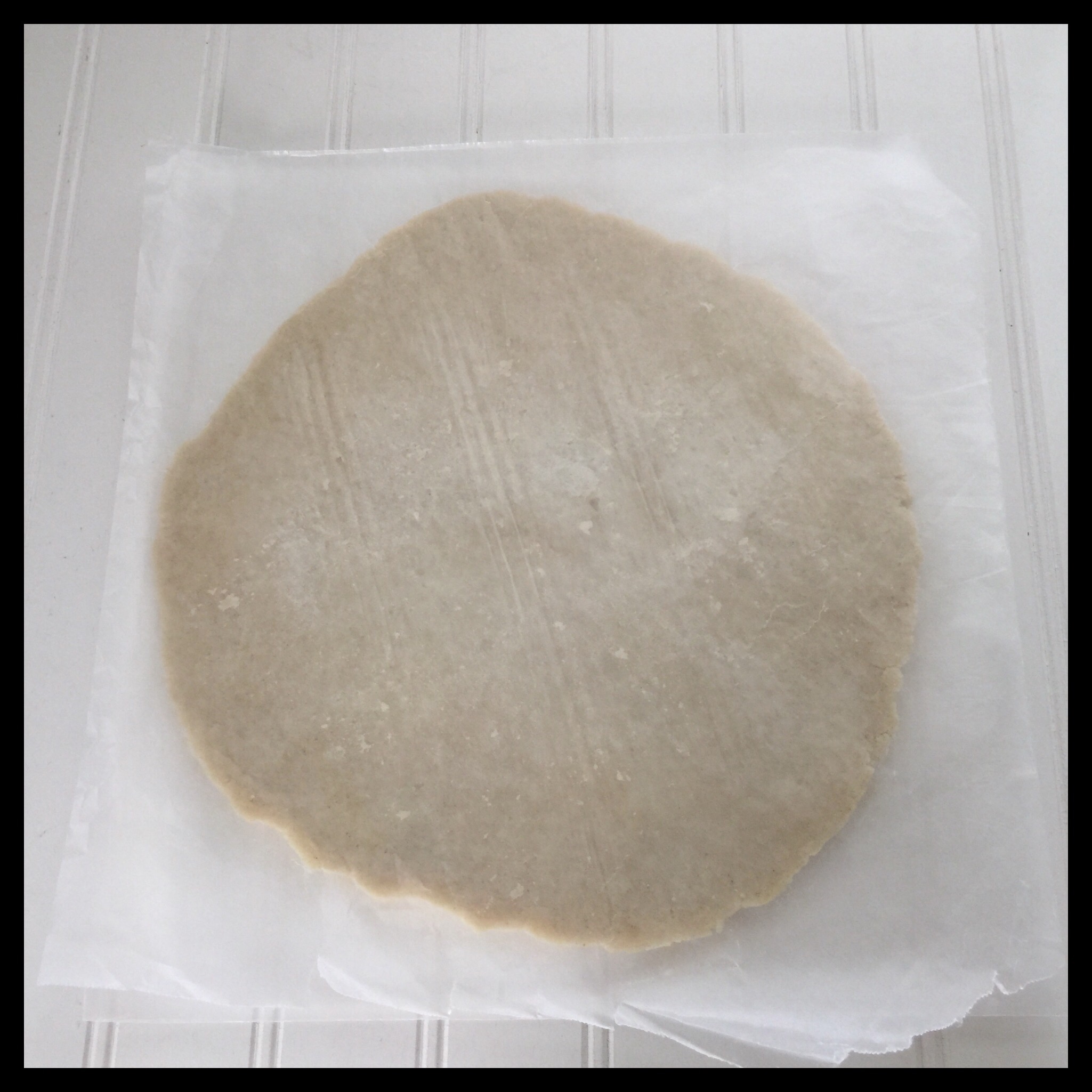
You are both a genius and a doll, Deborah, and you are such an inspiration! I’ve been dying to cook but accident recovery issues have kept me away from it for a few days. I admire the moxy of anyone, who makes a pie crust! The only kind I’ve made so far are the raw ones. Can’t wait to master flour!
Thank you so much, Karmah! I hope you feel better soon and can get back to cooking and baking! This crust is really easy to work with so it shouldn’t be much more difficult than a raw one.
You’re crust looks really good… looks like I’ve got to buy Vodka!
Thank you! The vodka makes a big difference!
Is there a substitute for vodka in your pie crust recipe?
The vodka does help the overall texture of the pie crust, but you can use all water instead of half vodka.